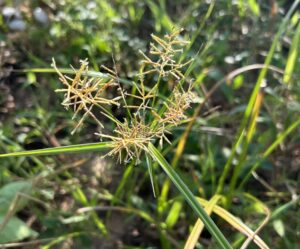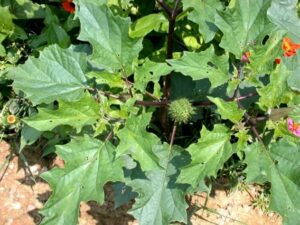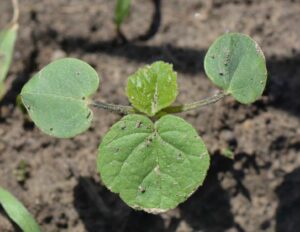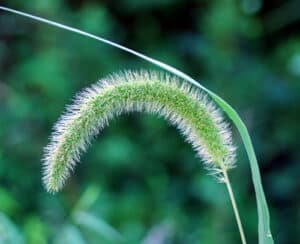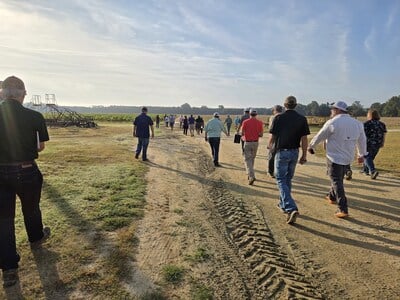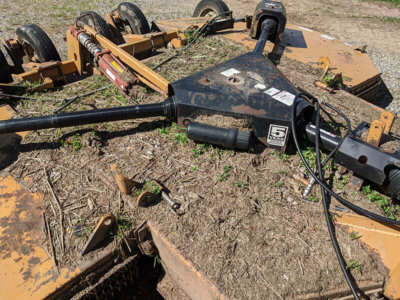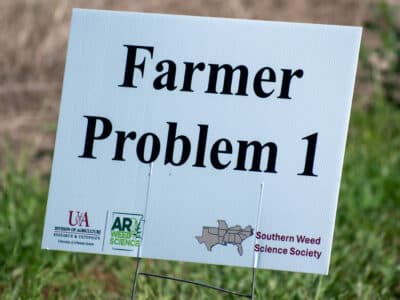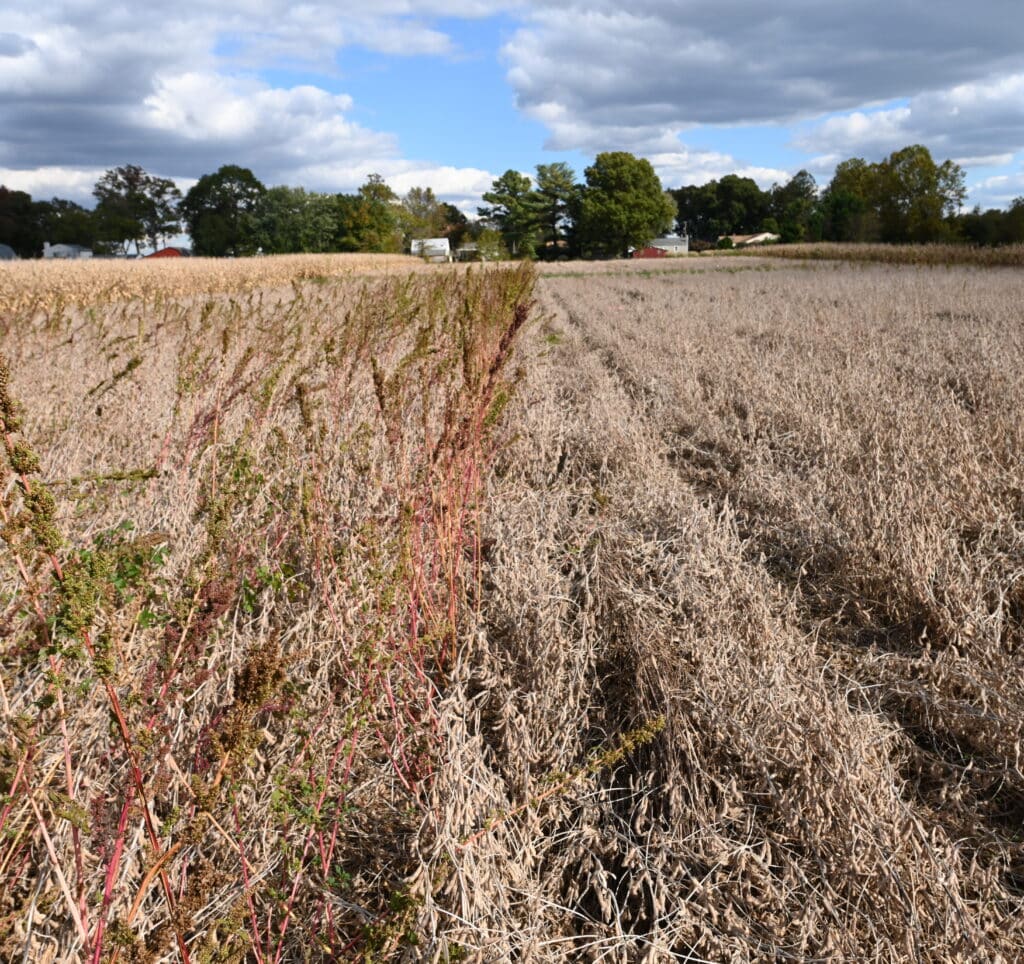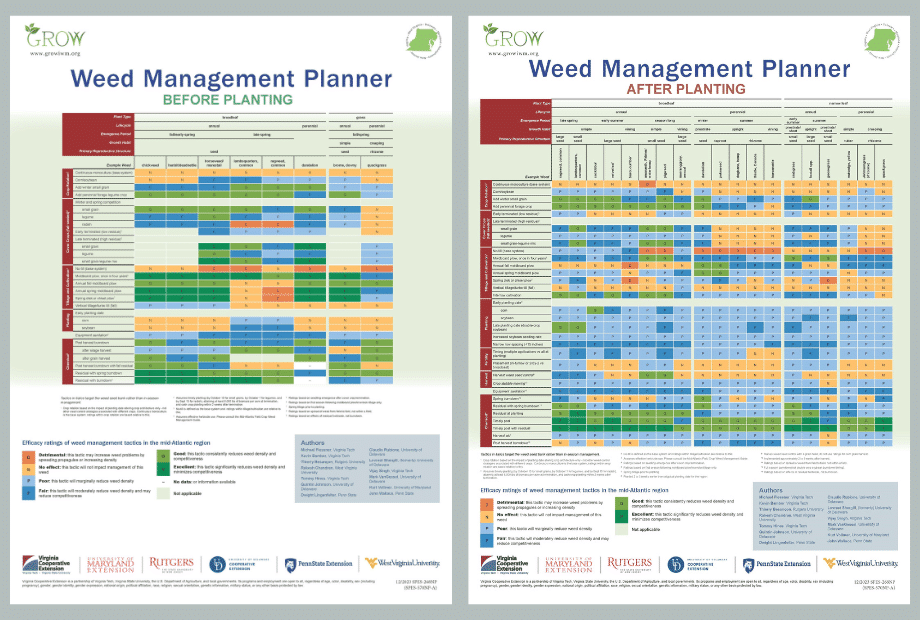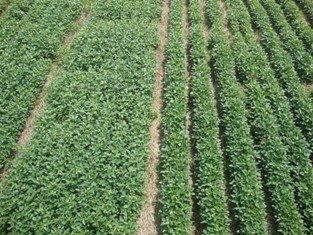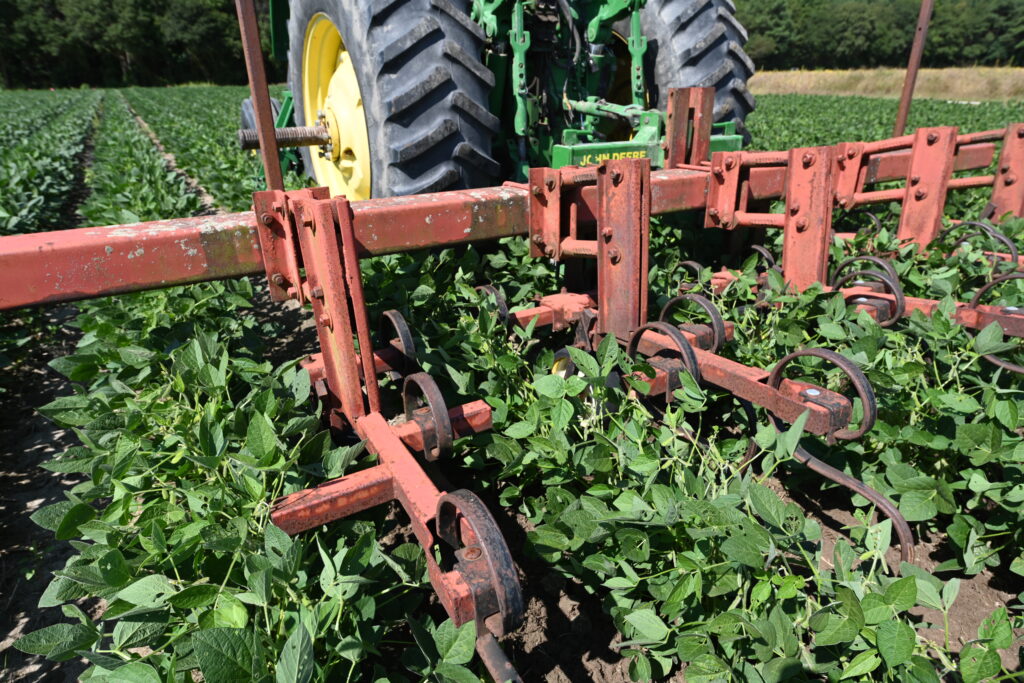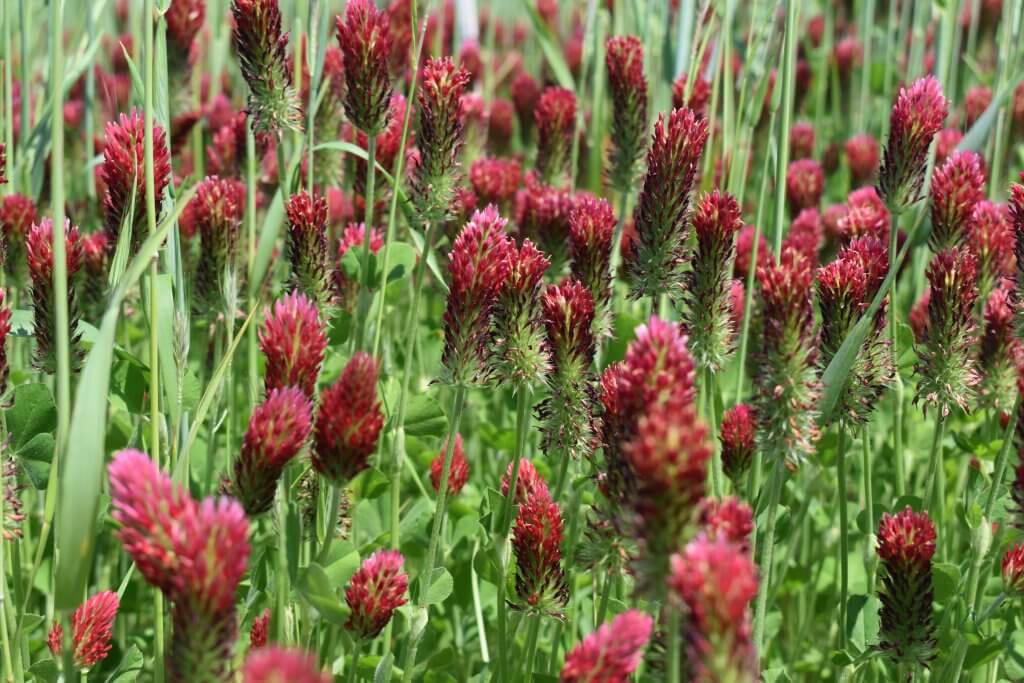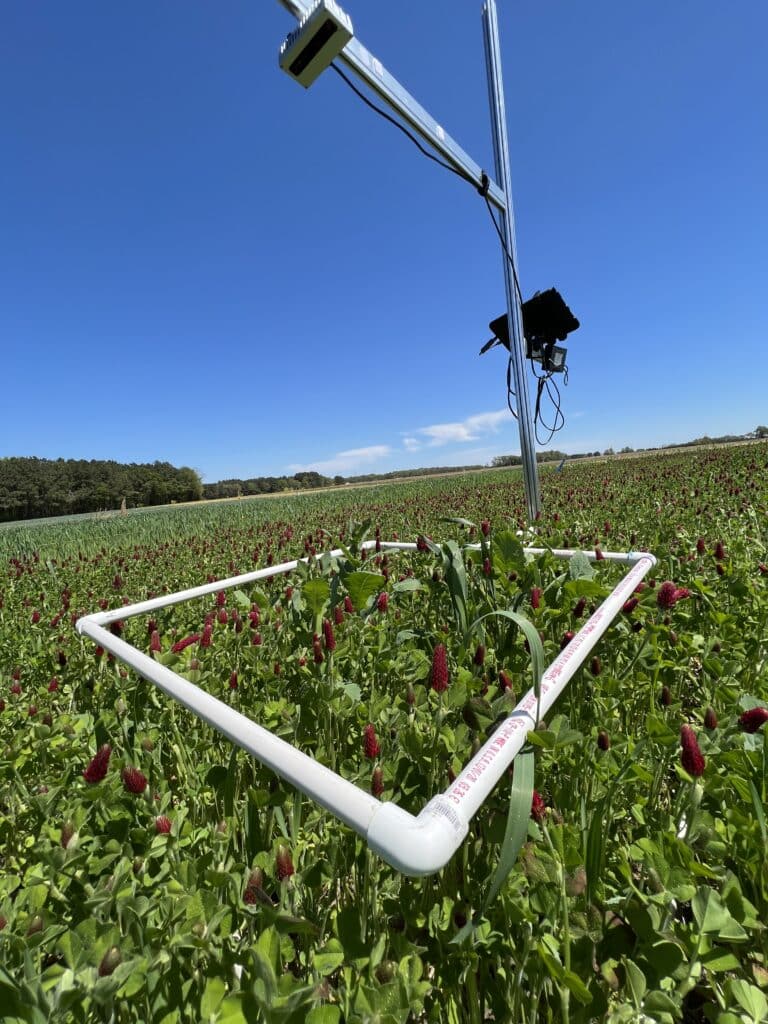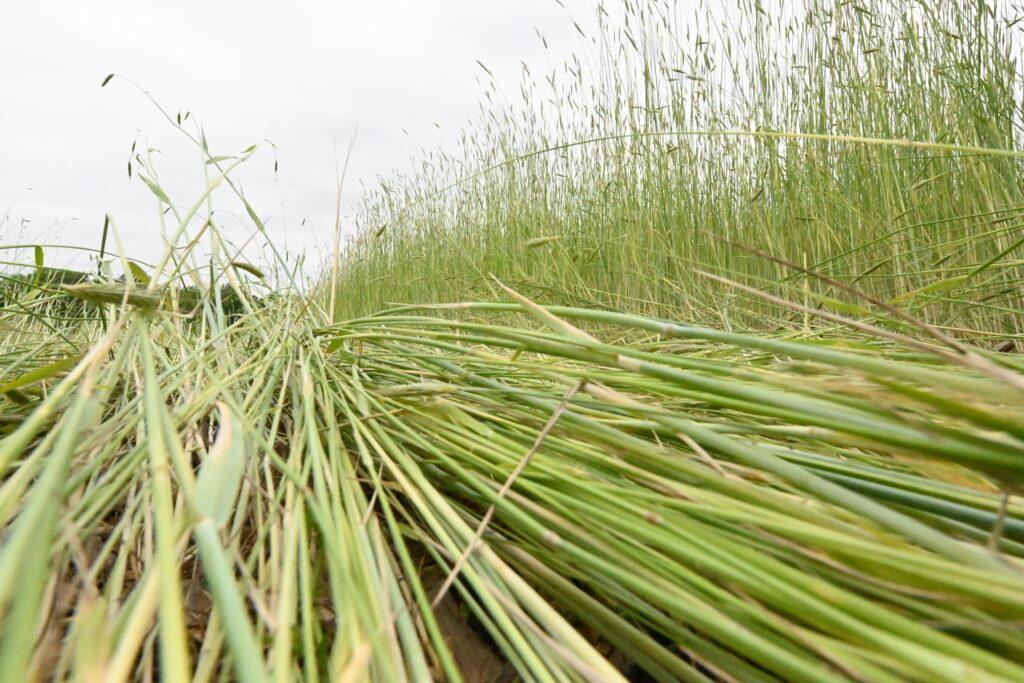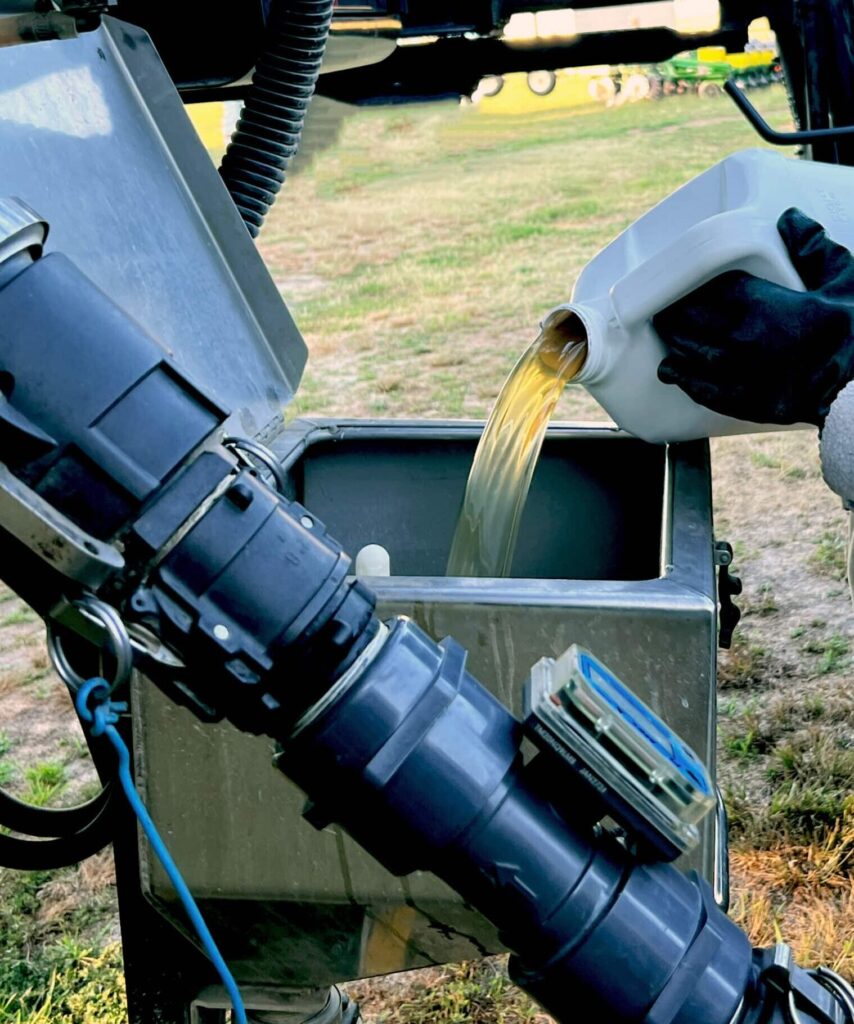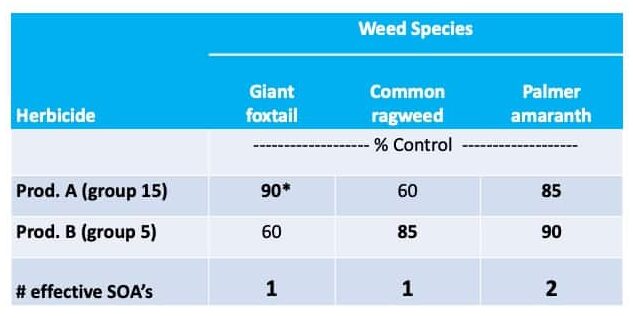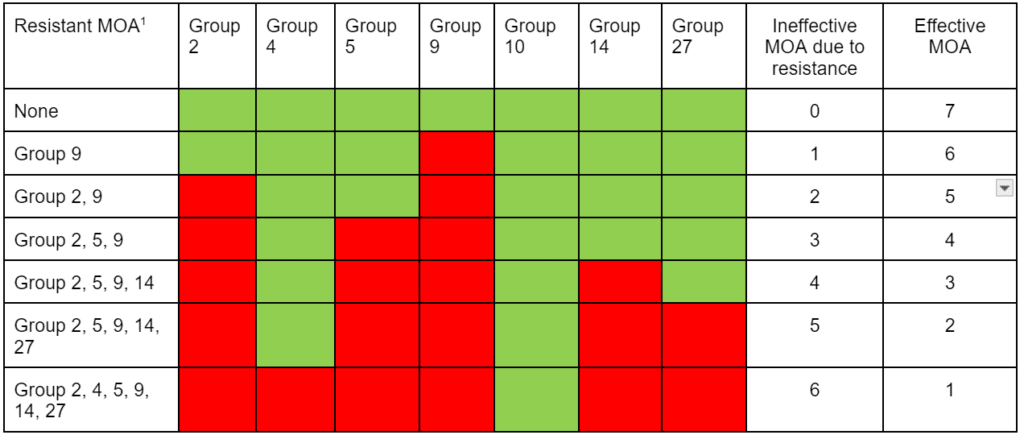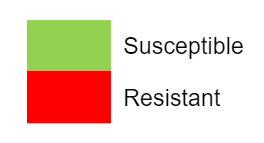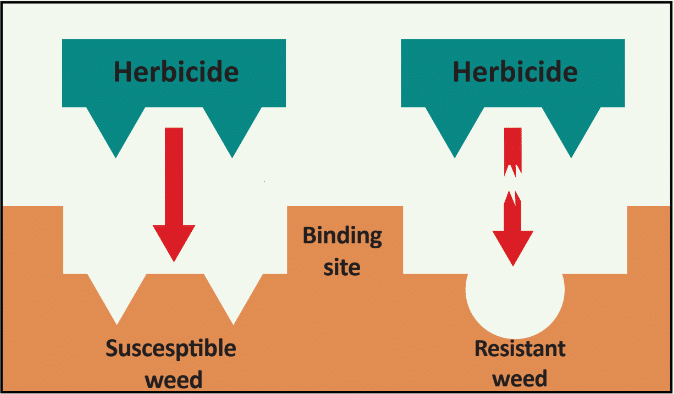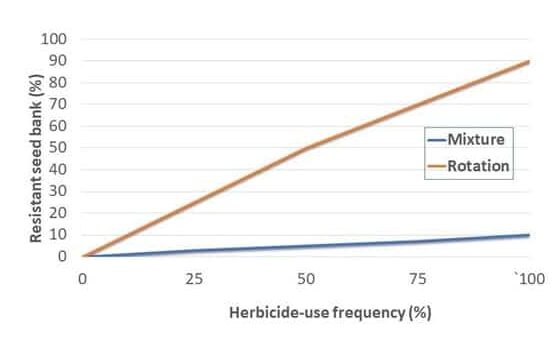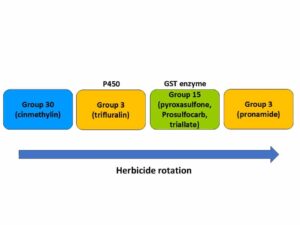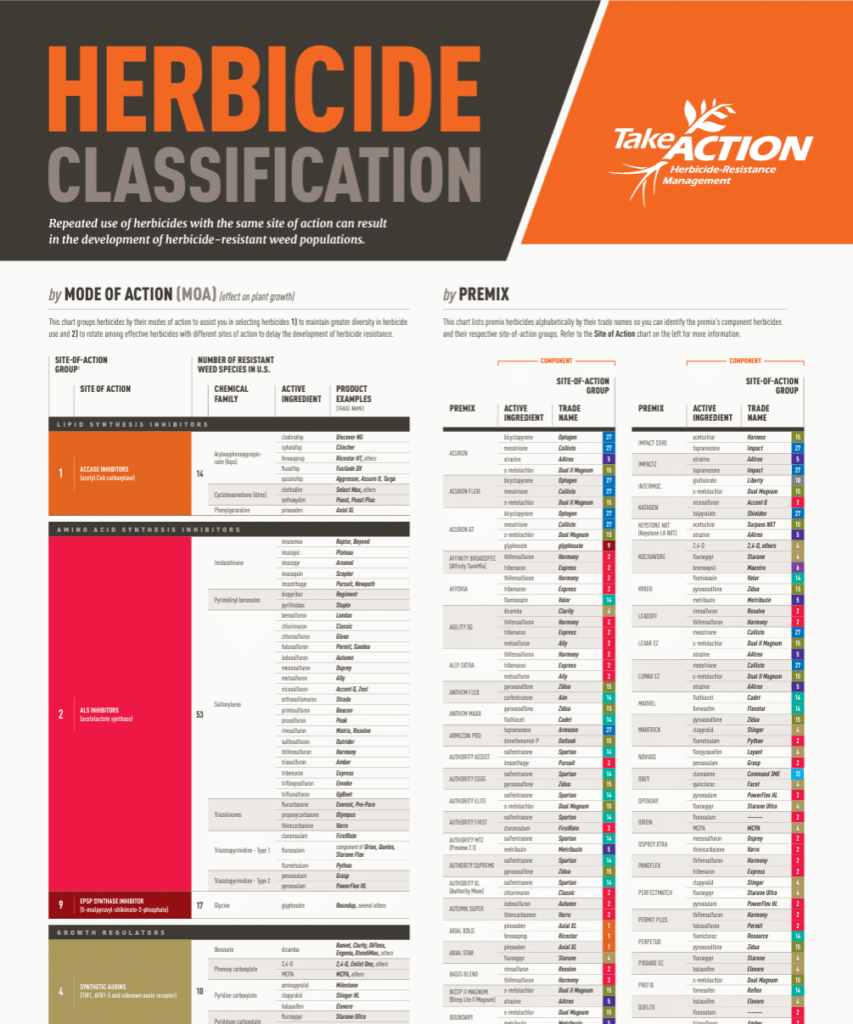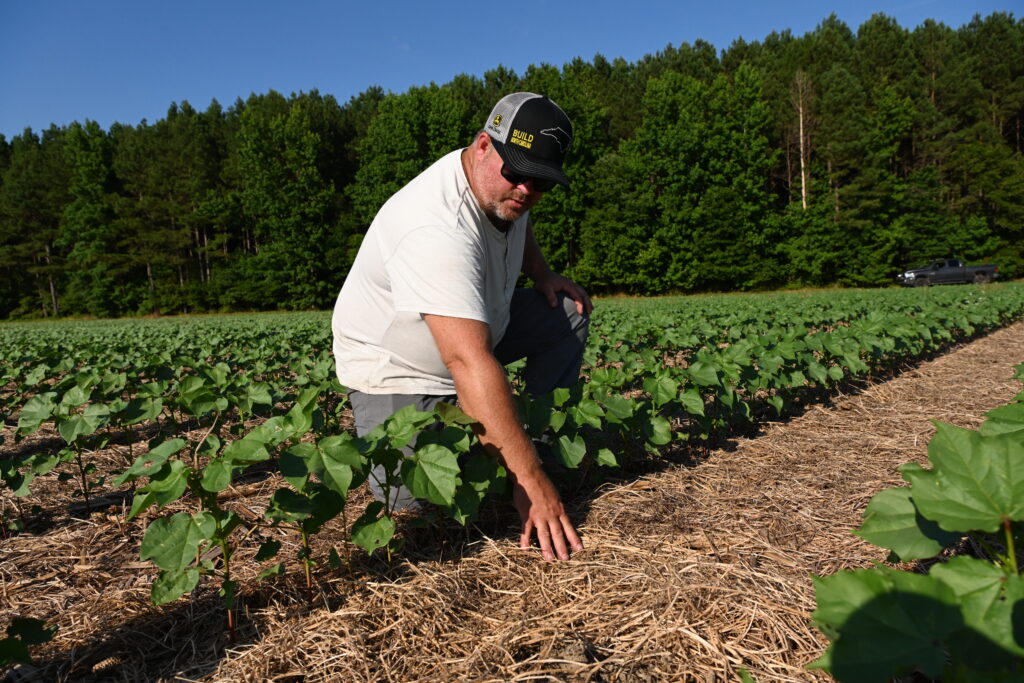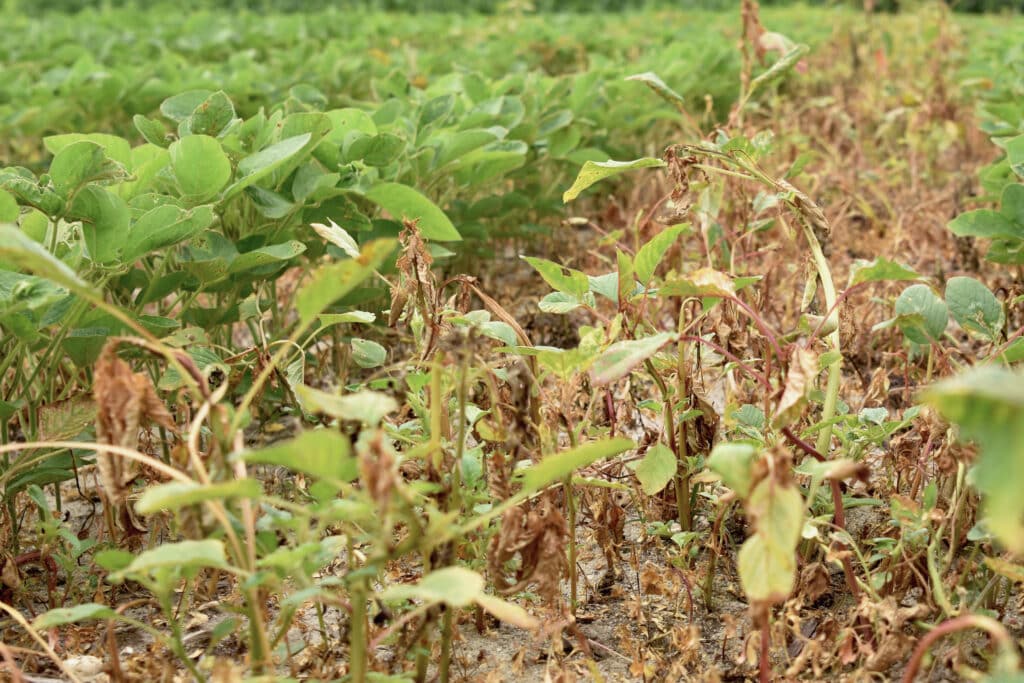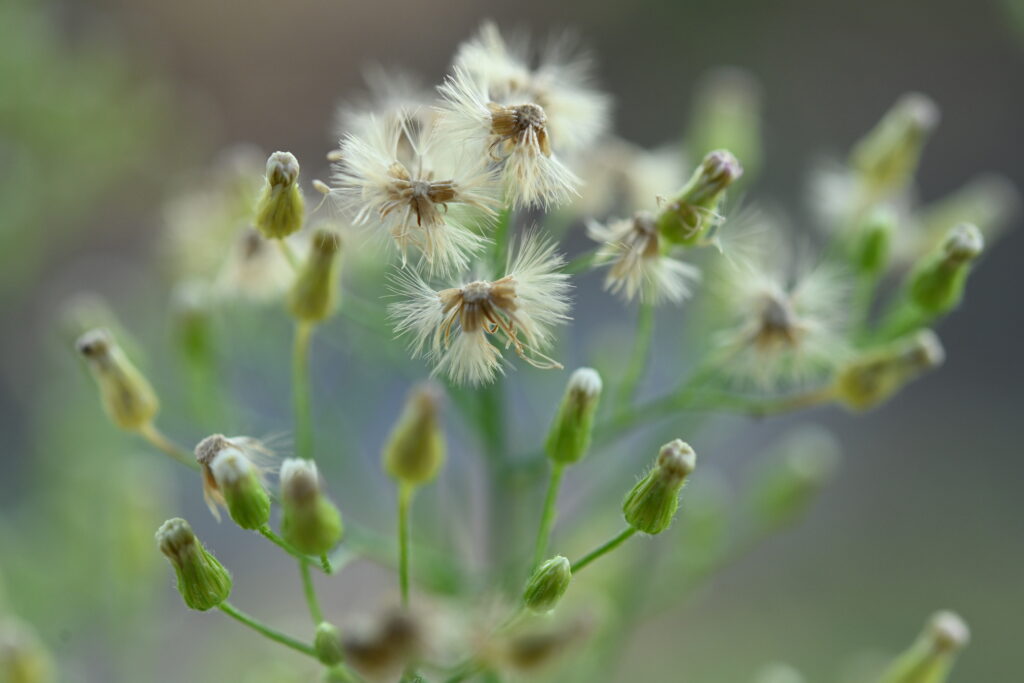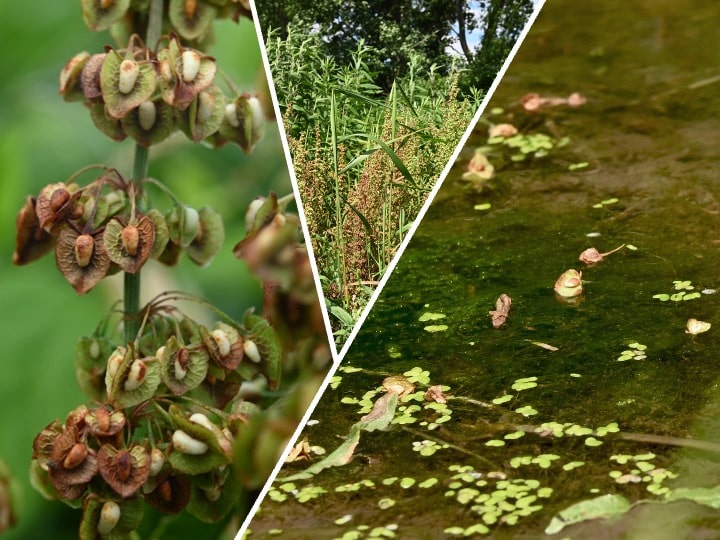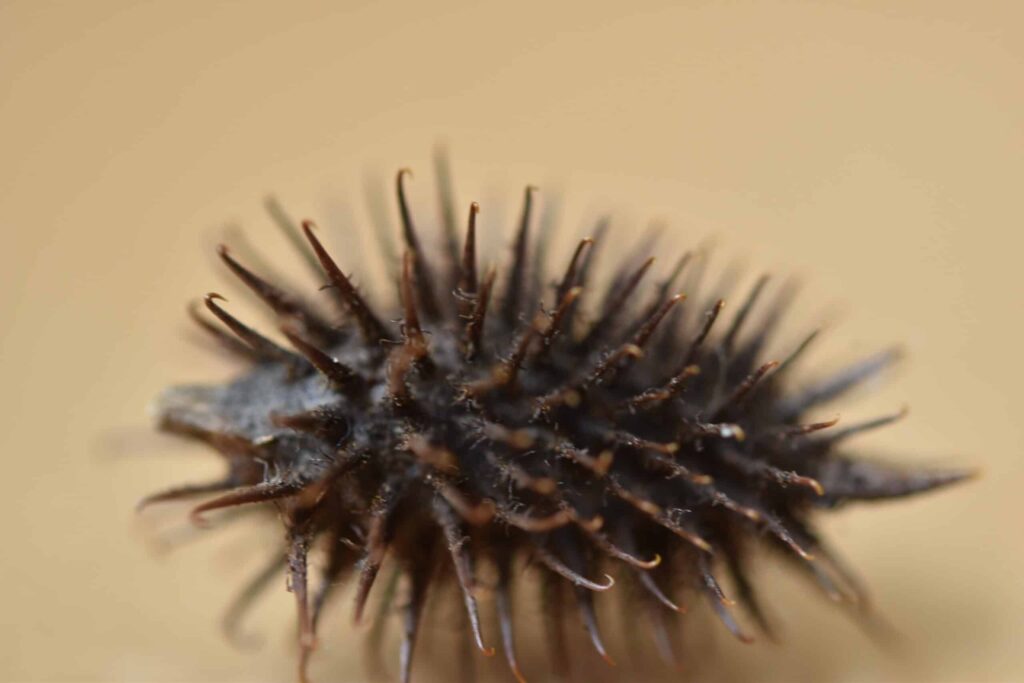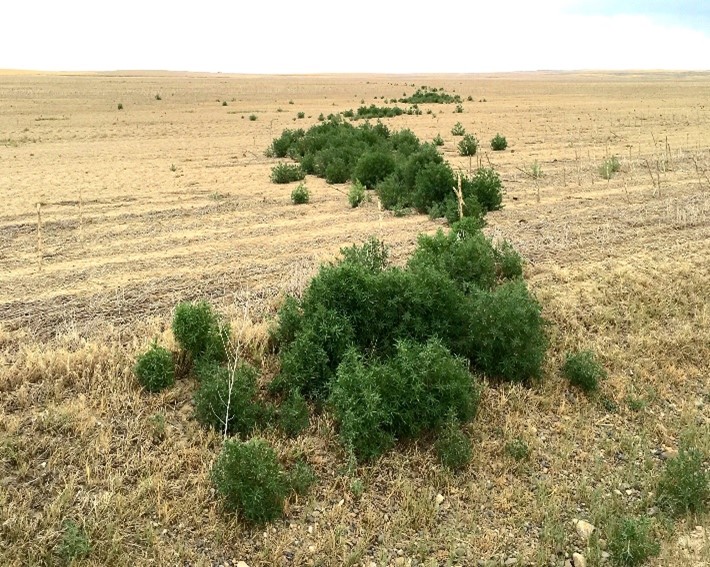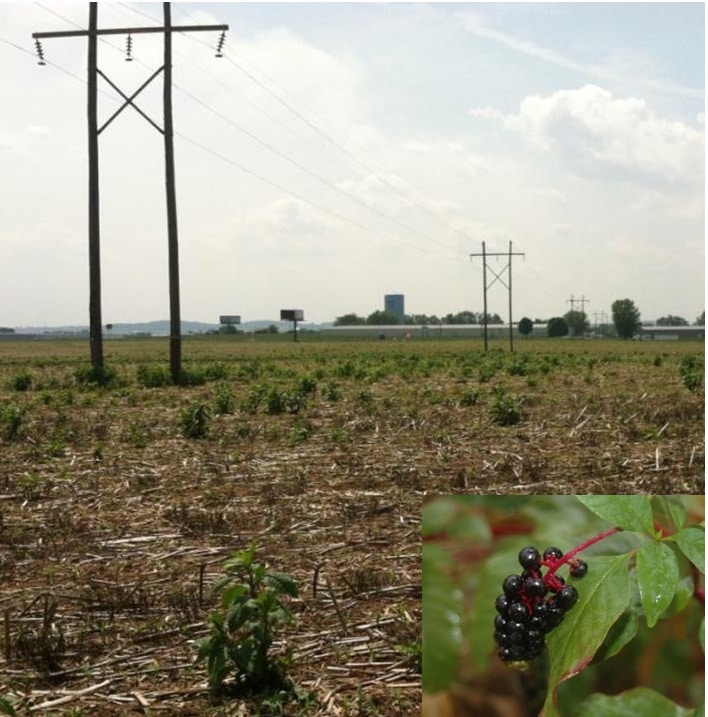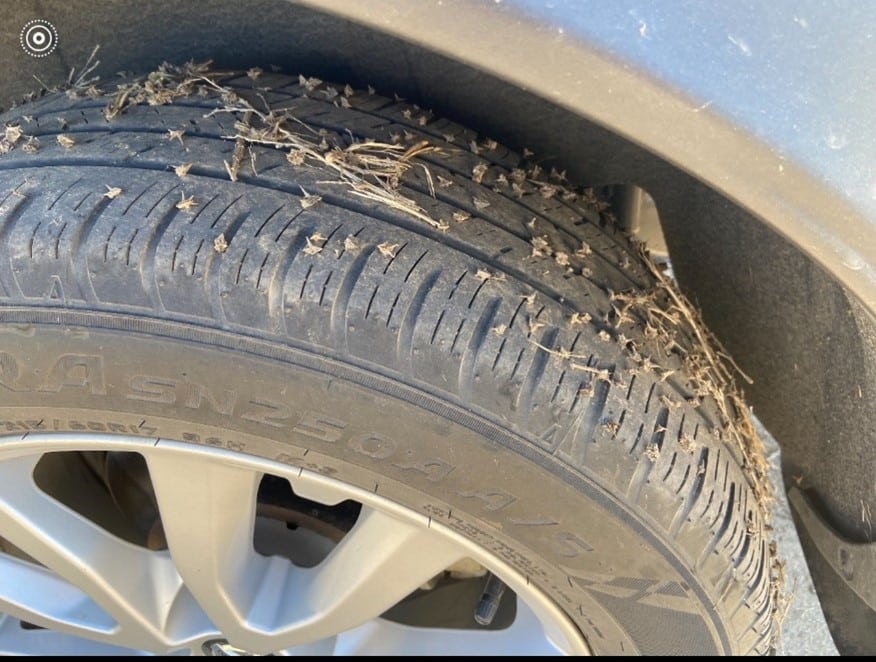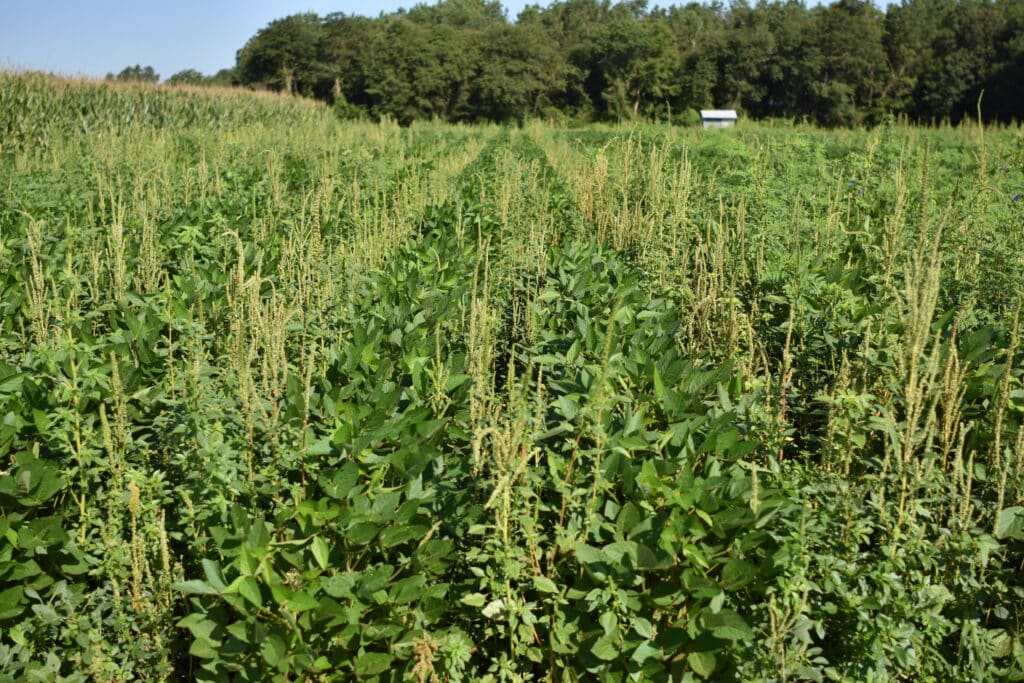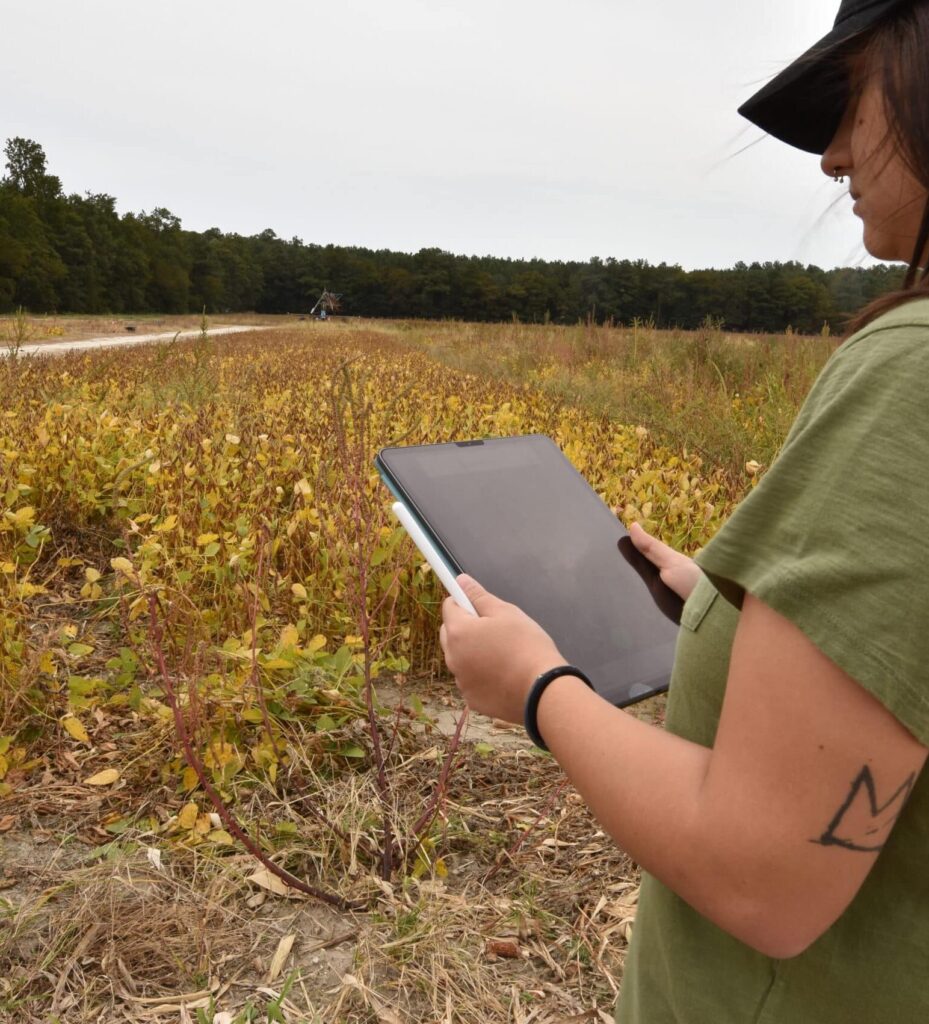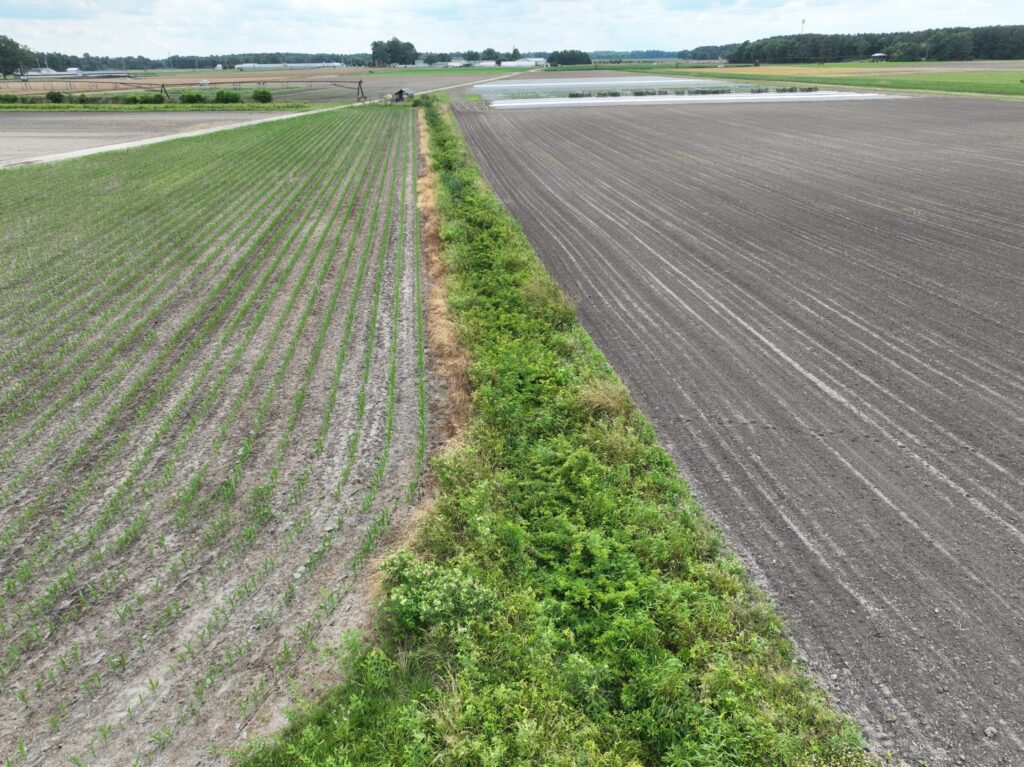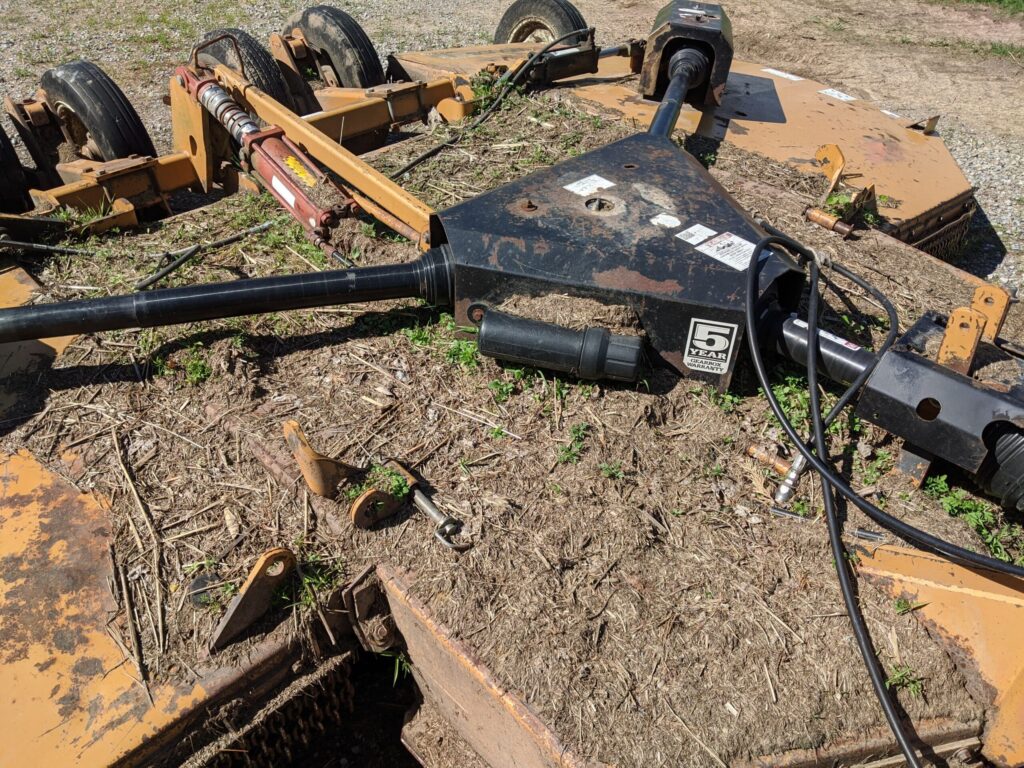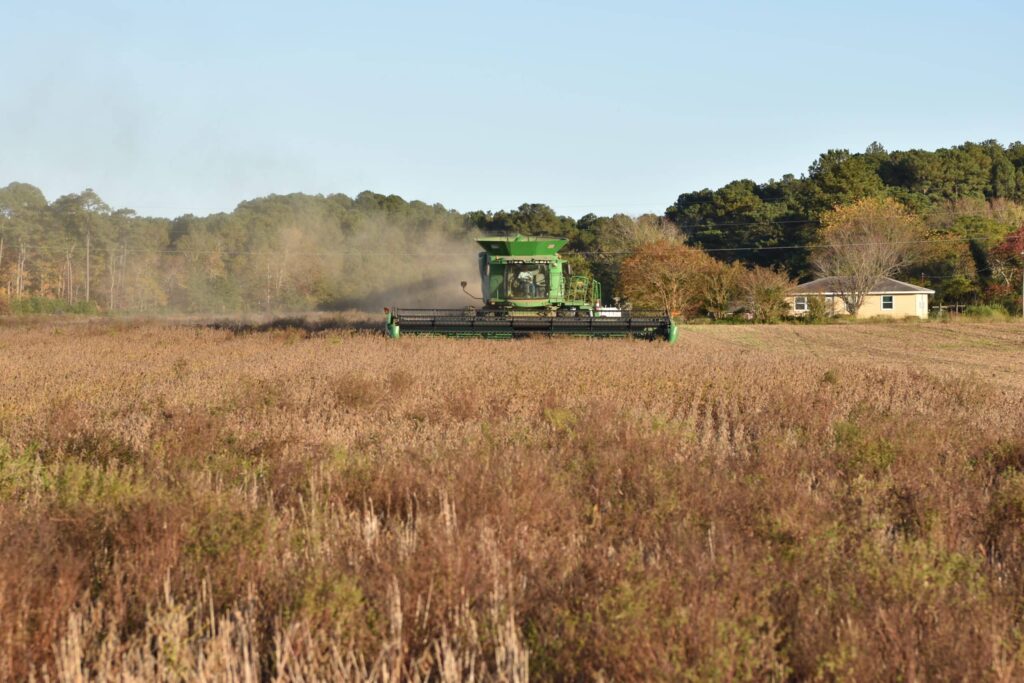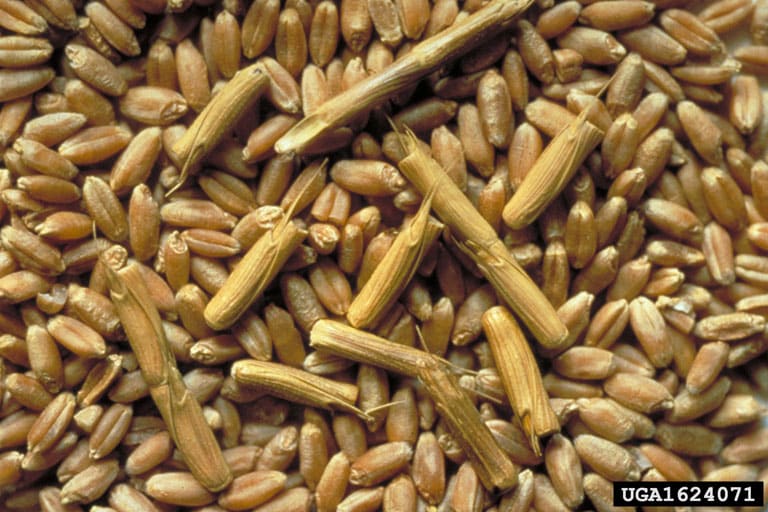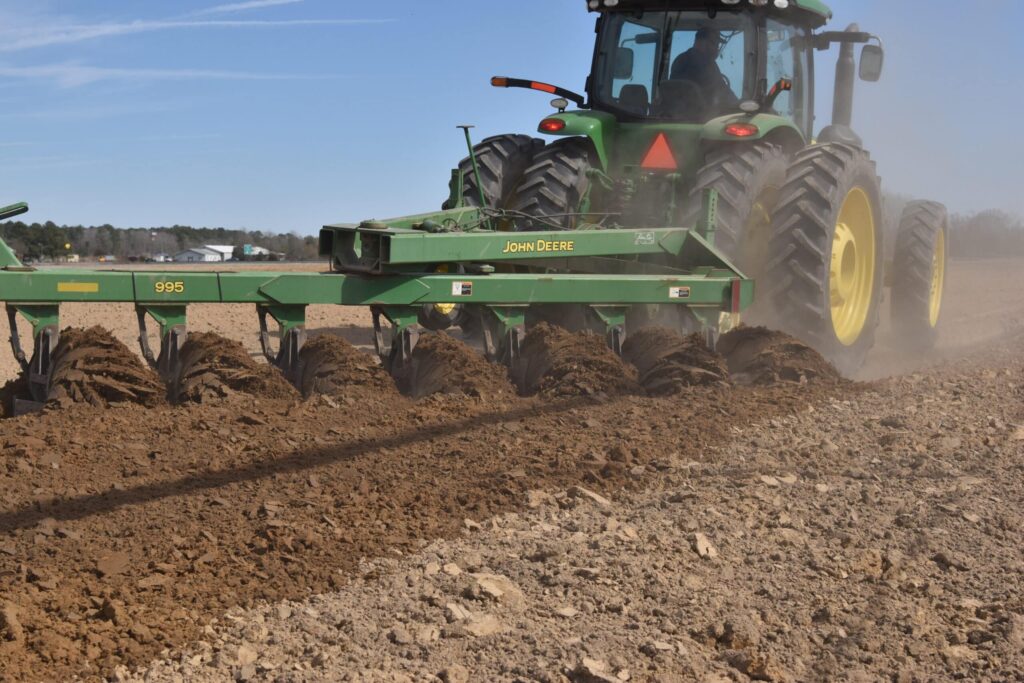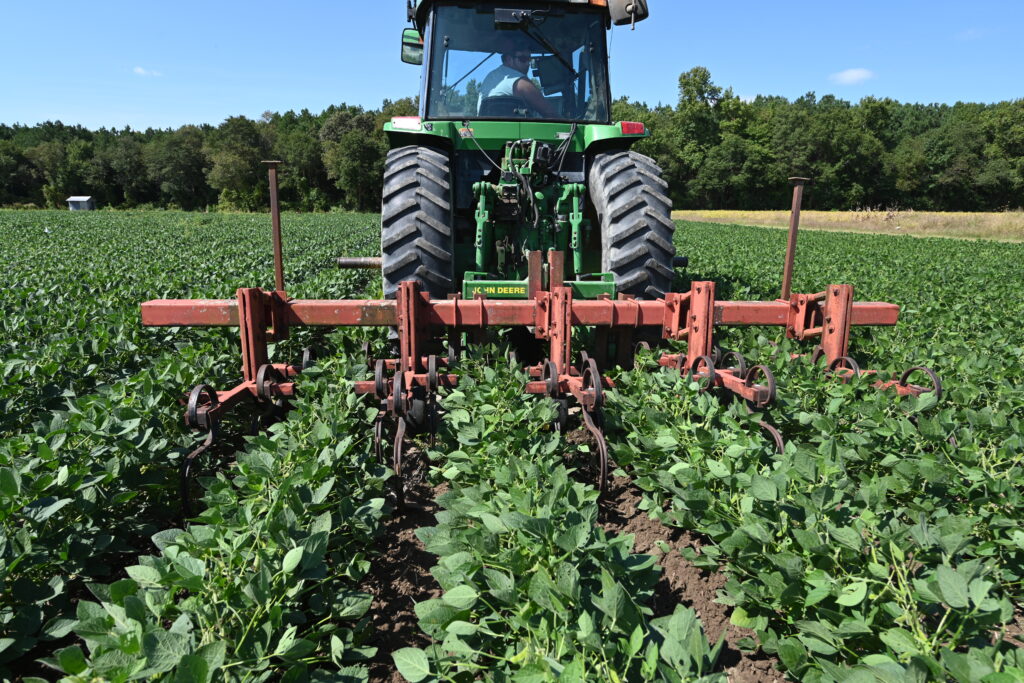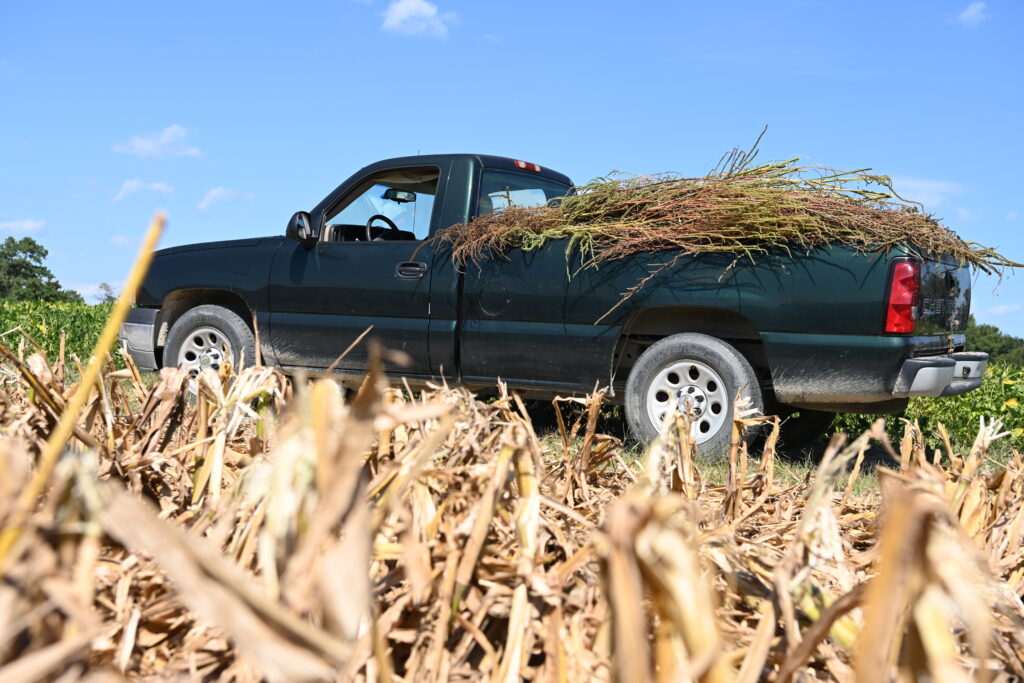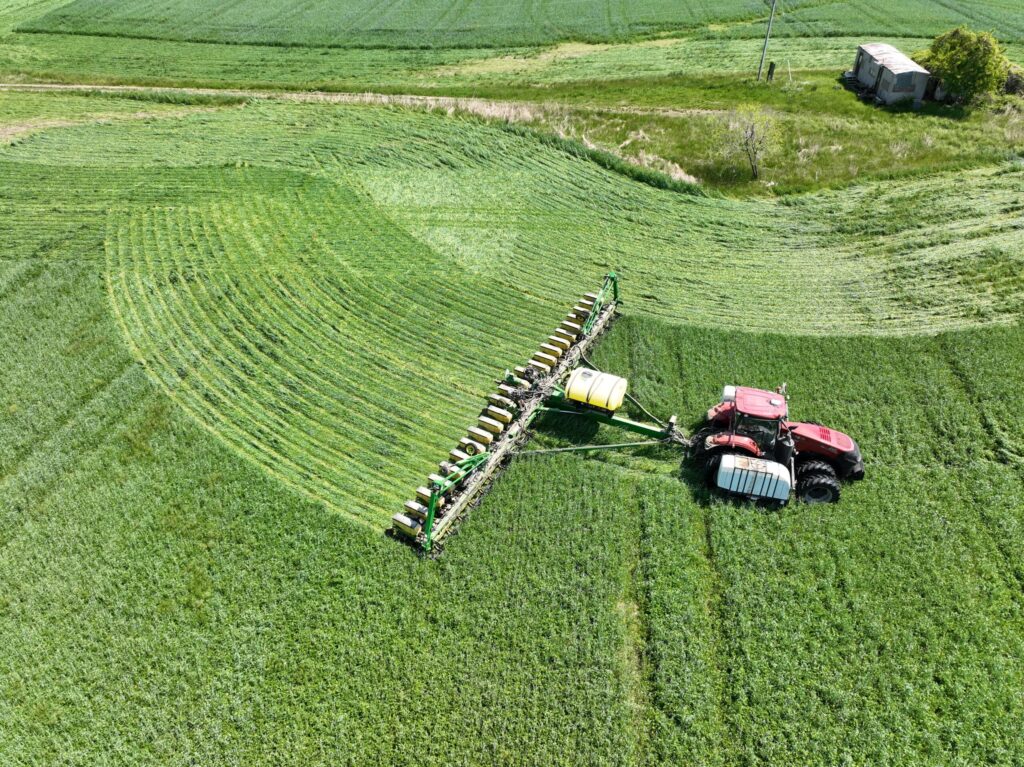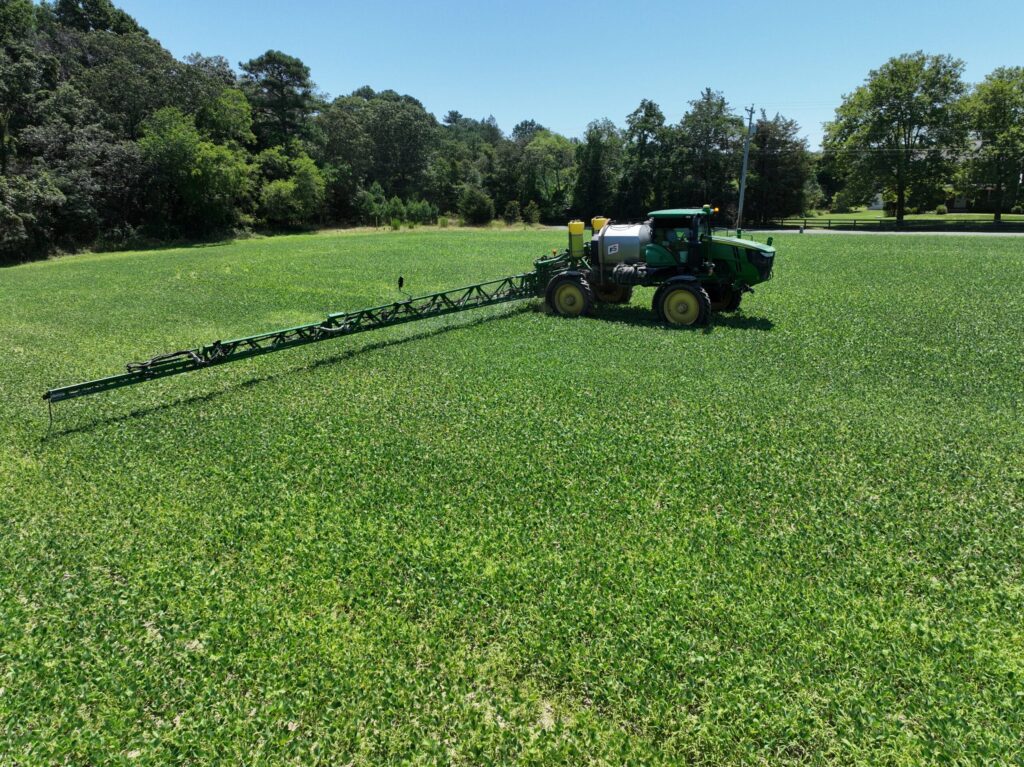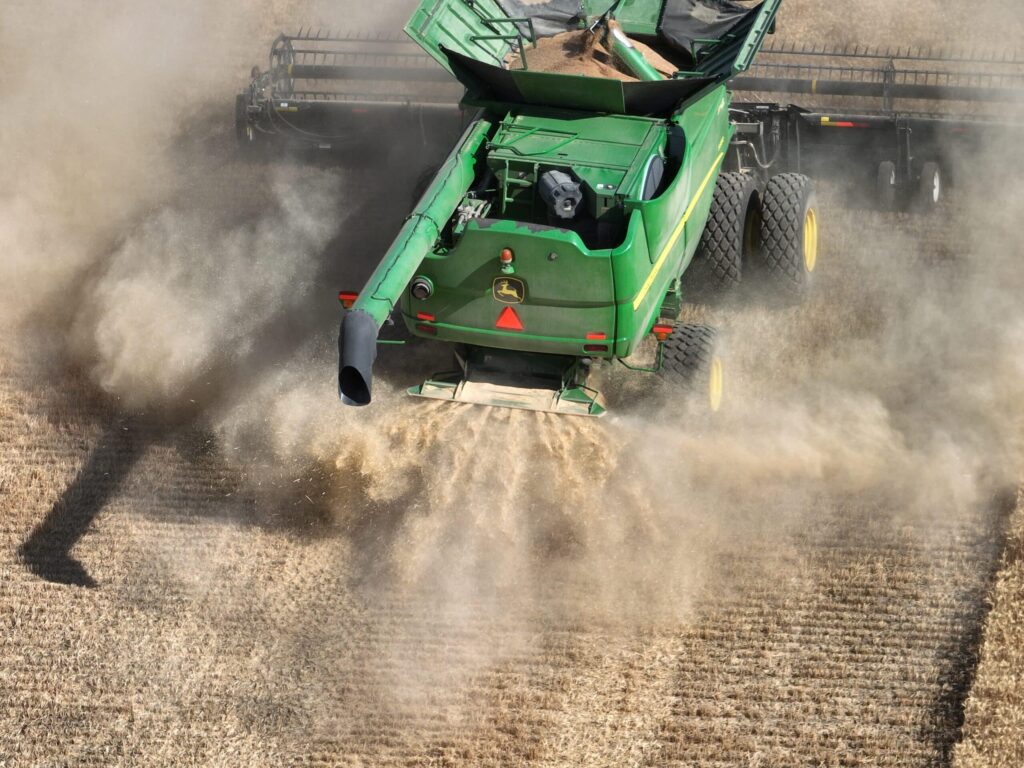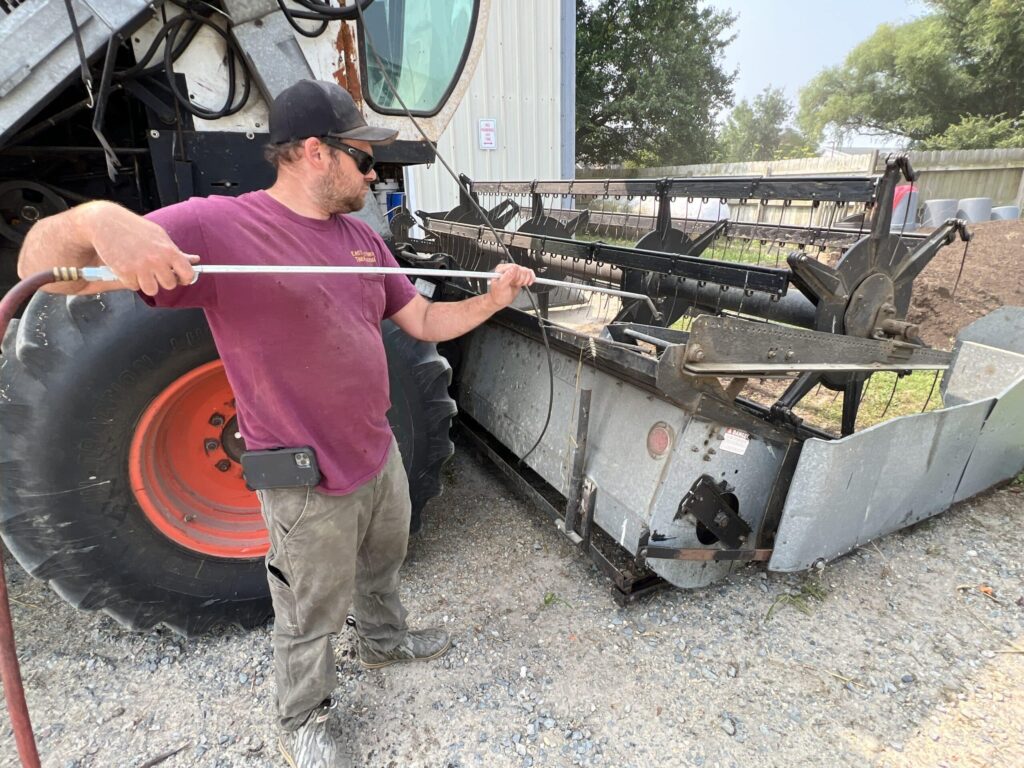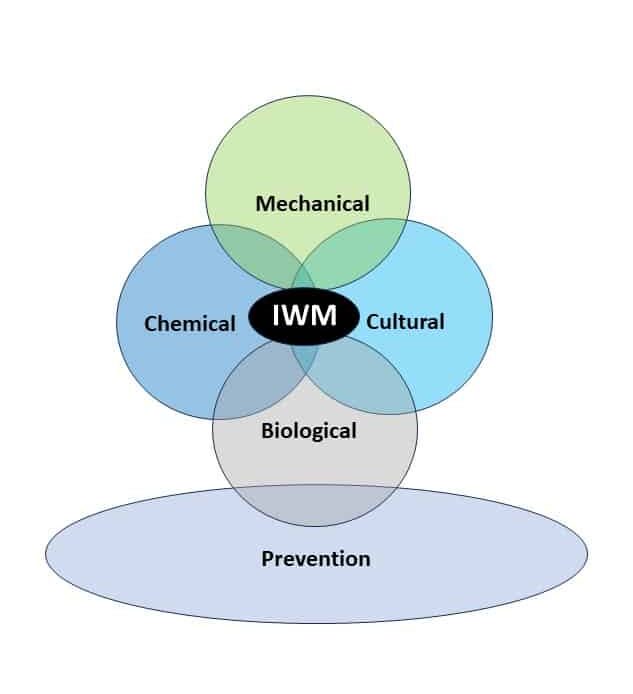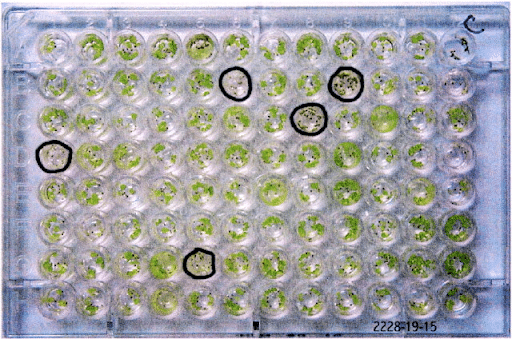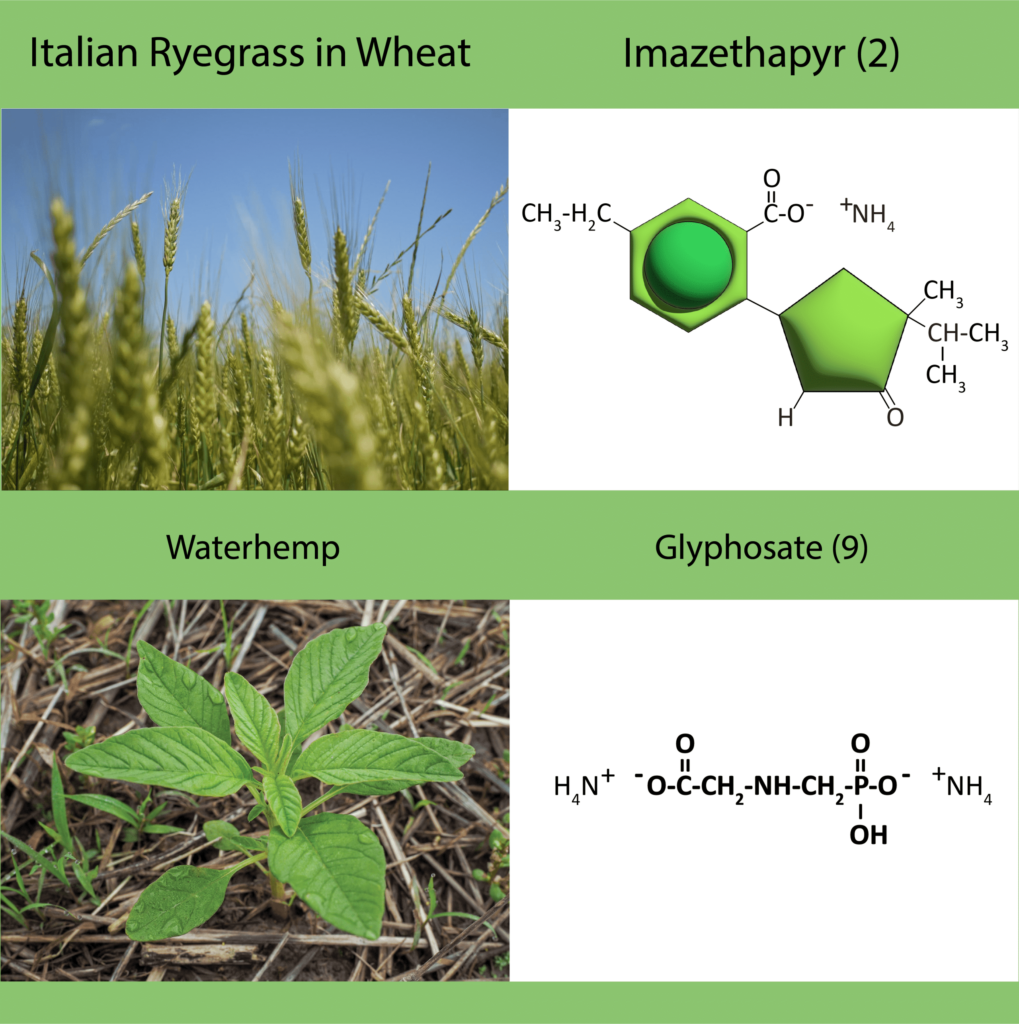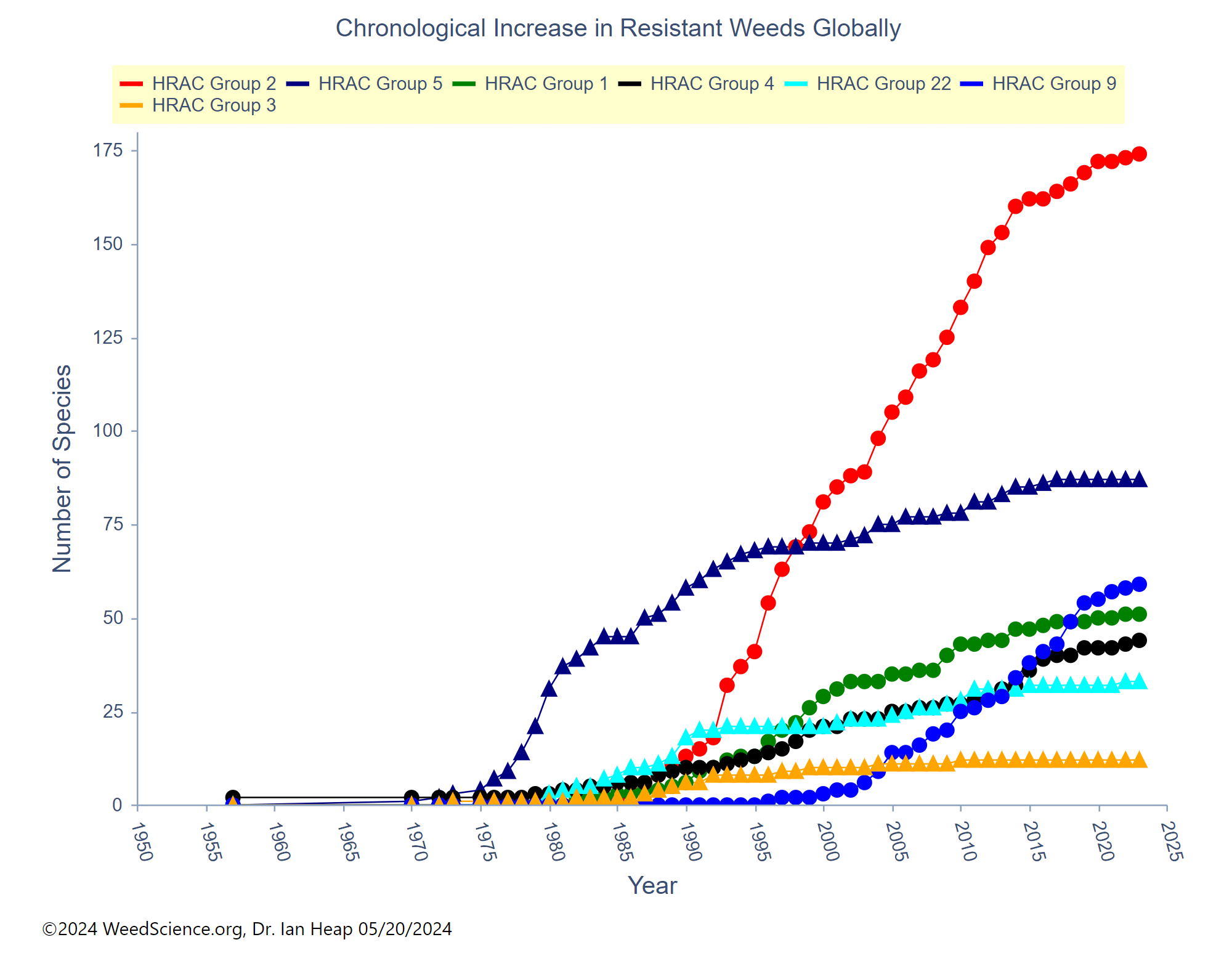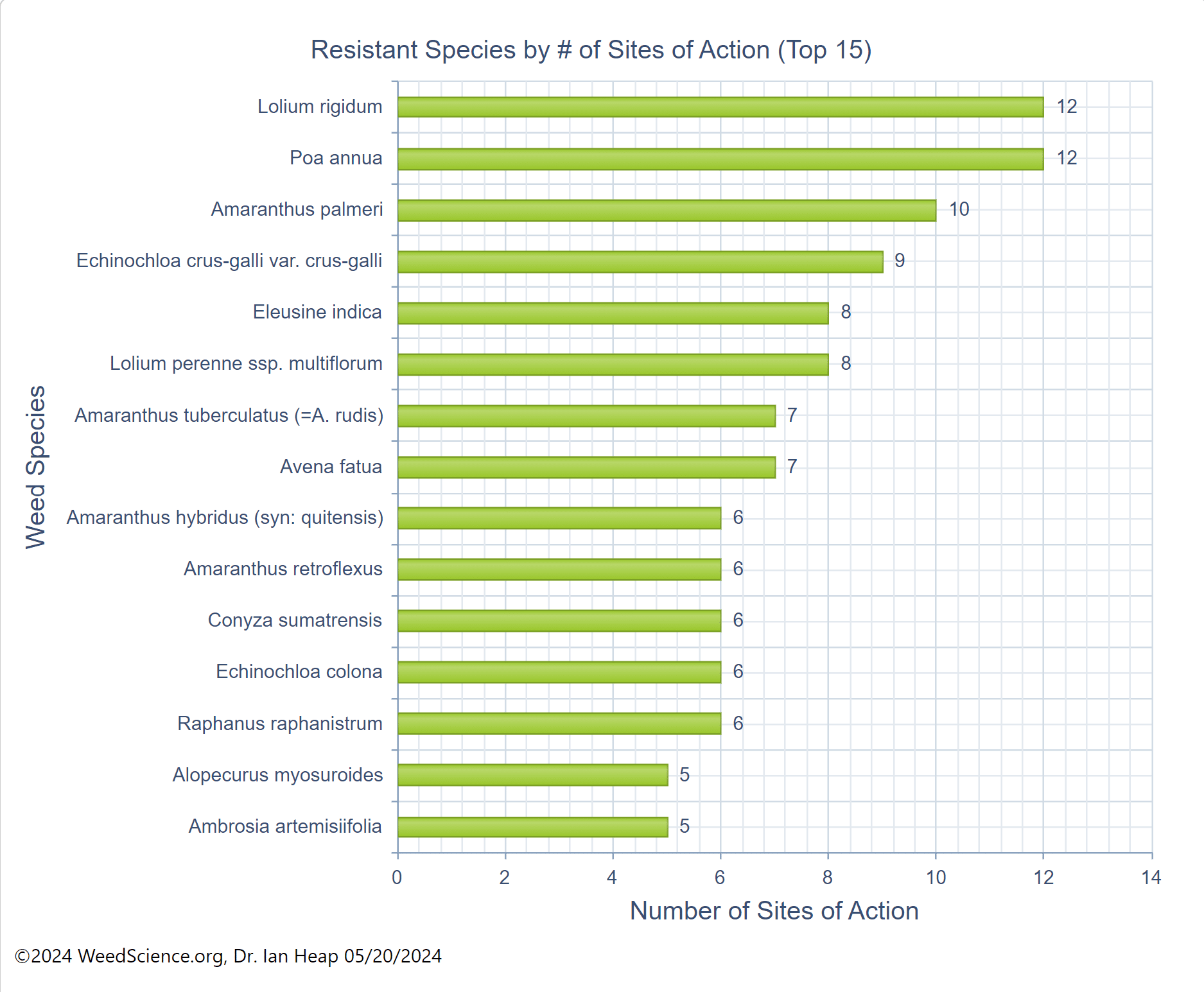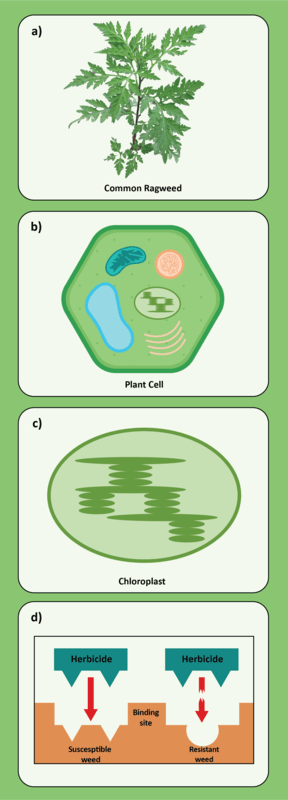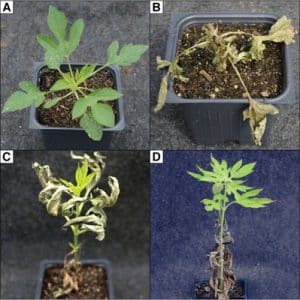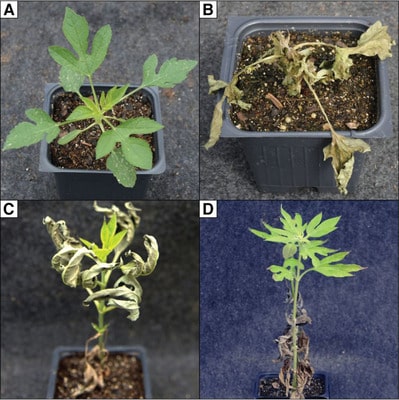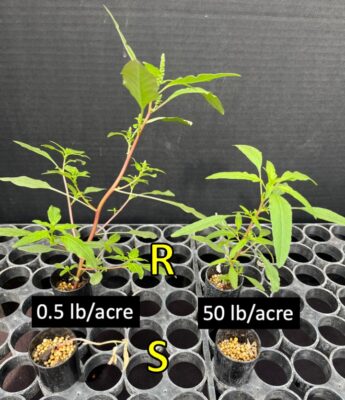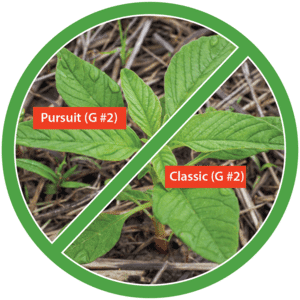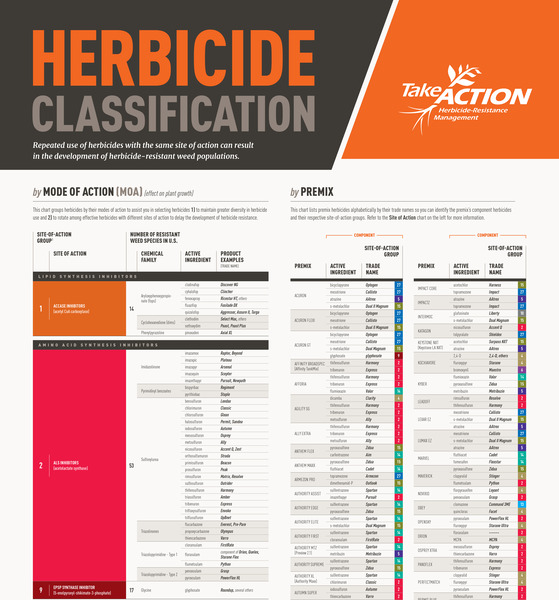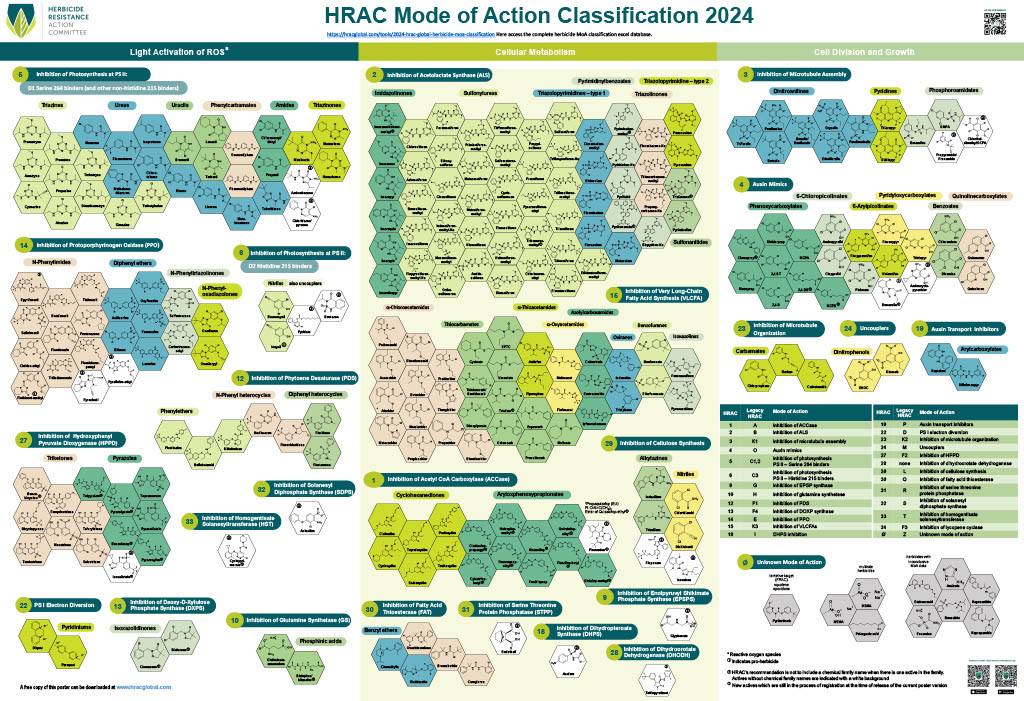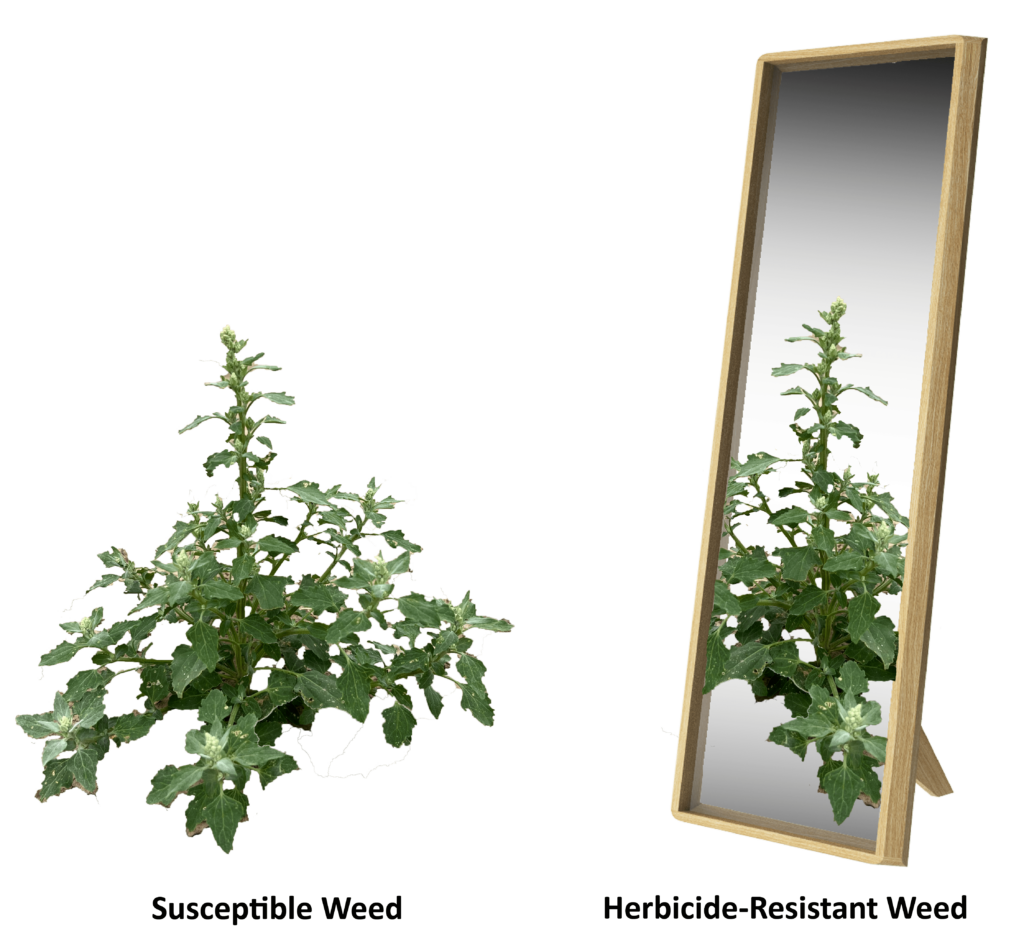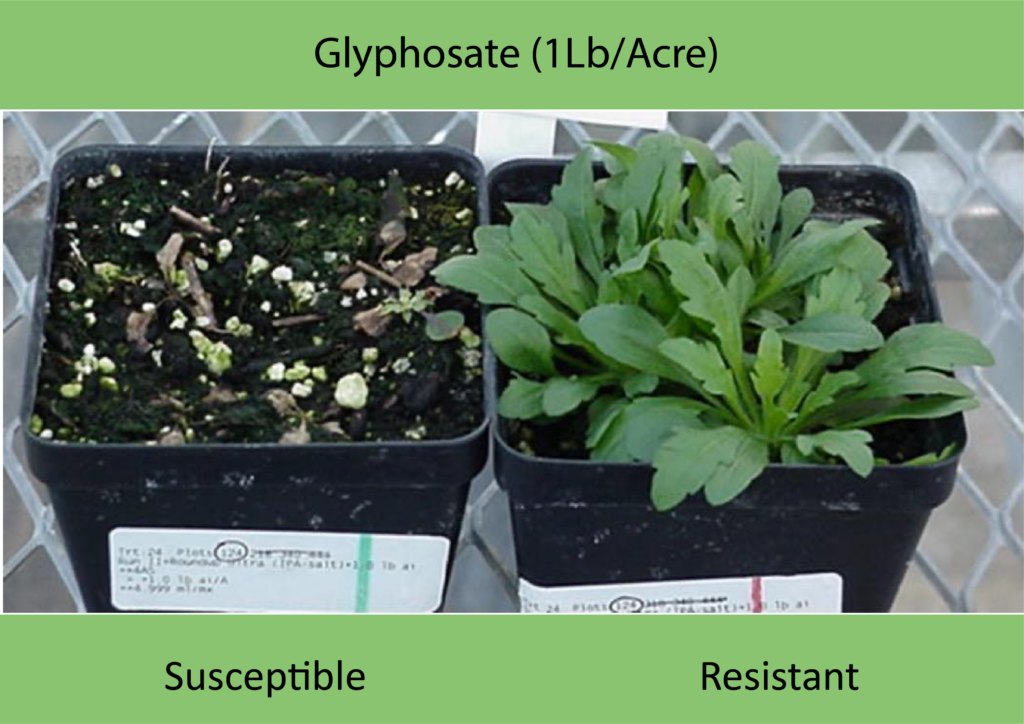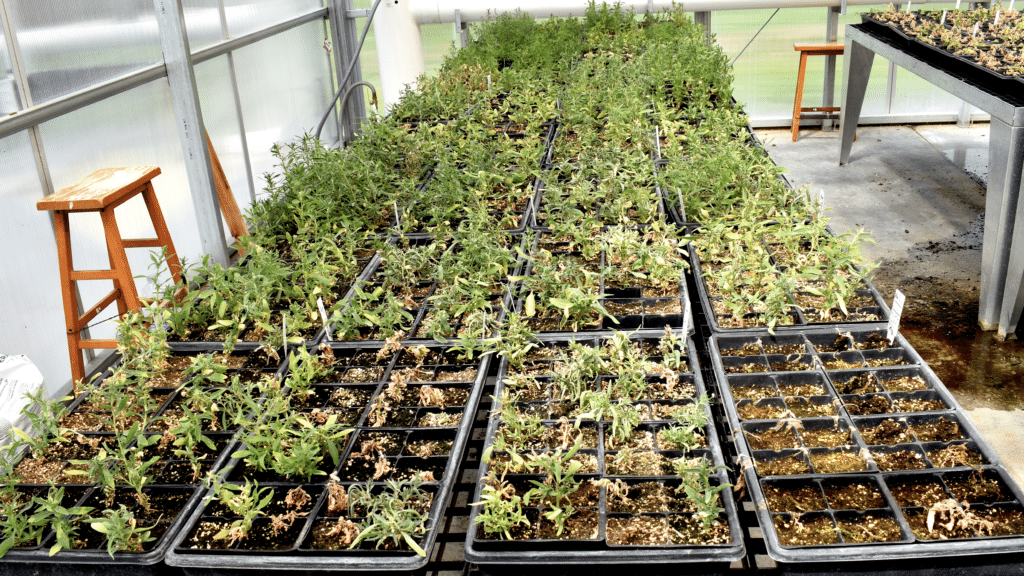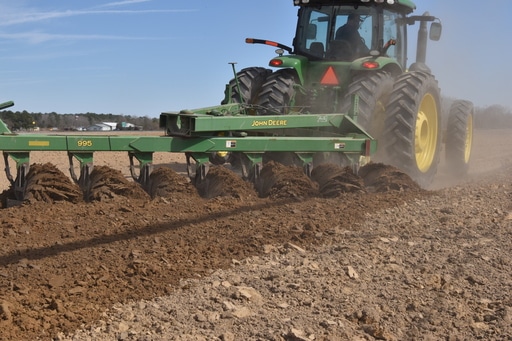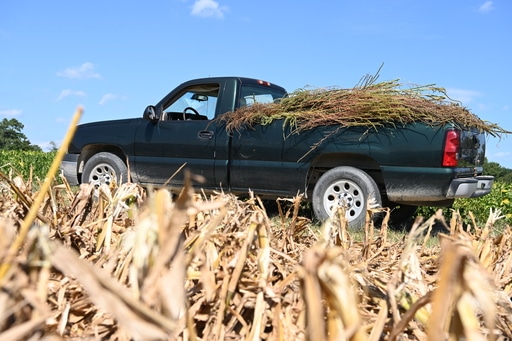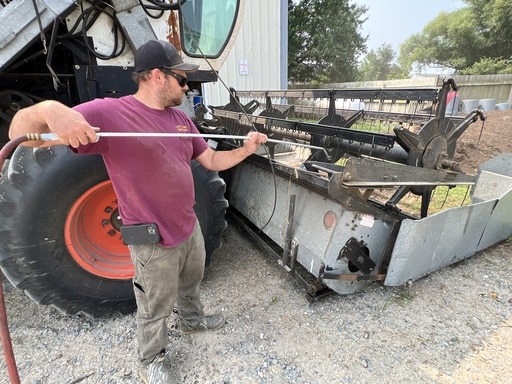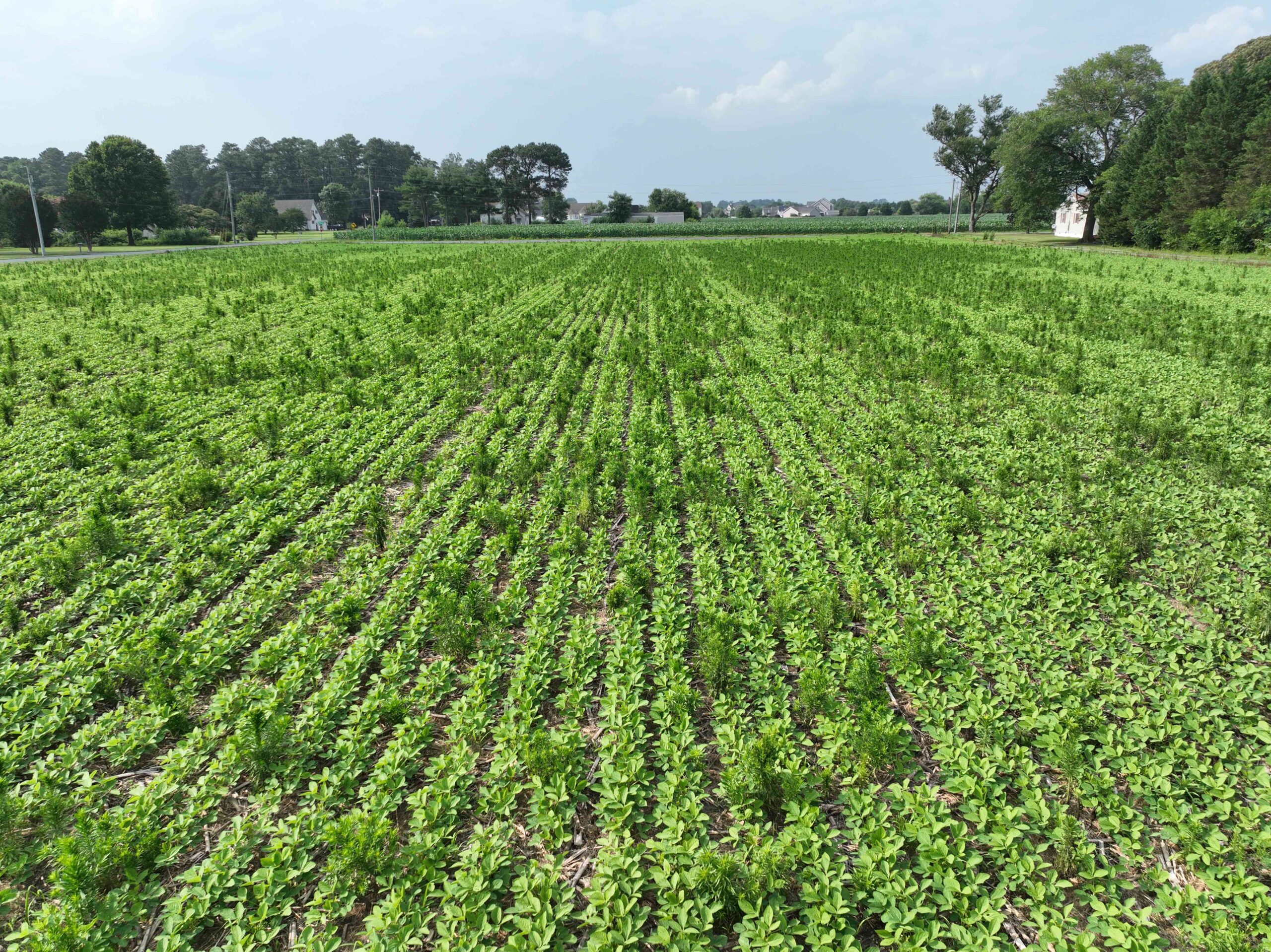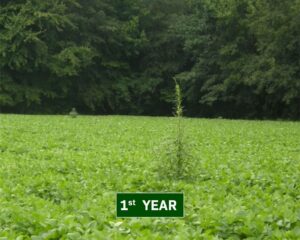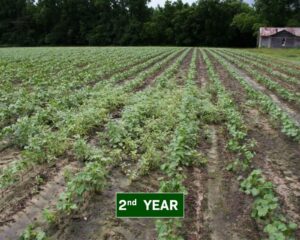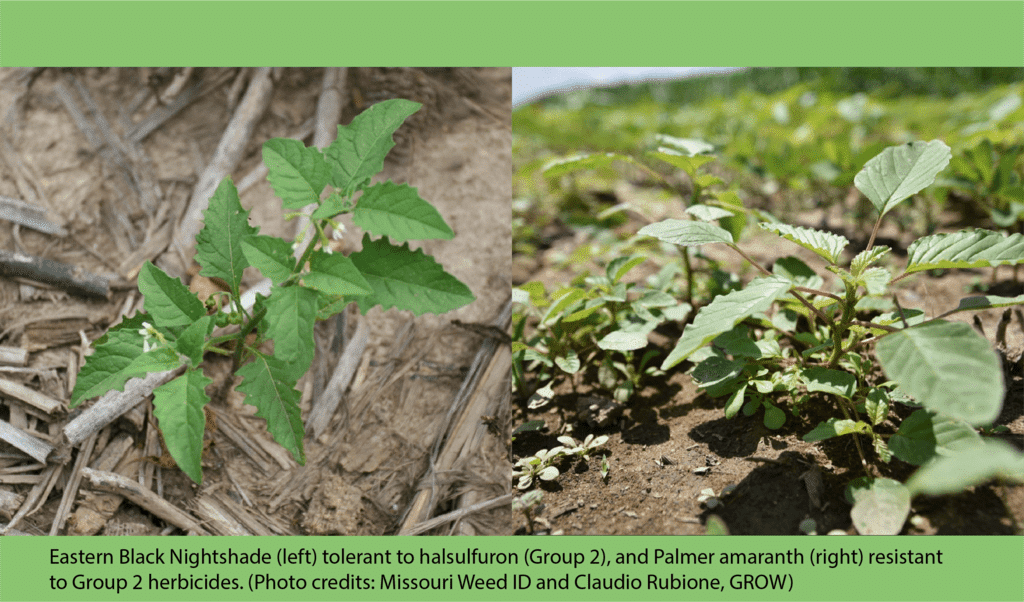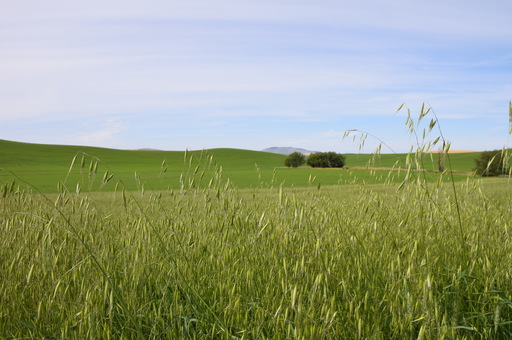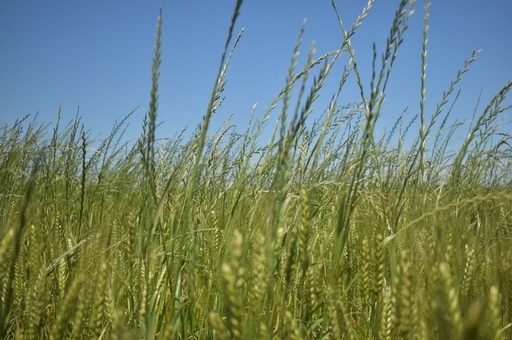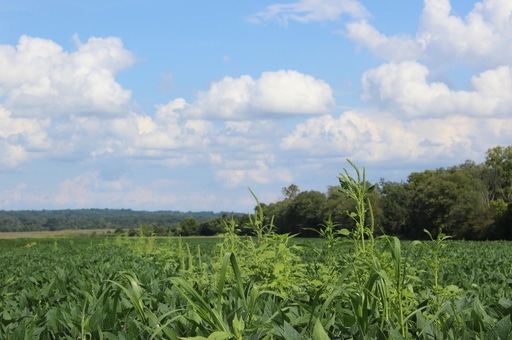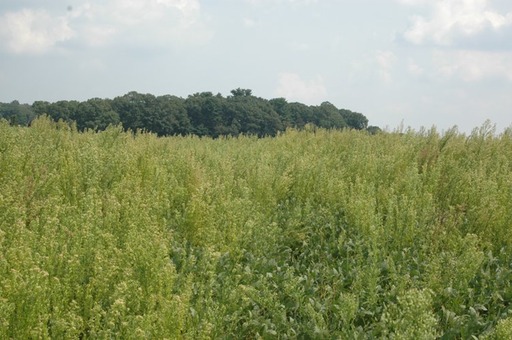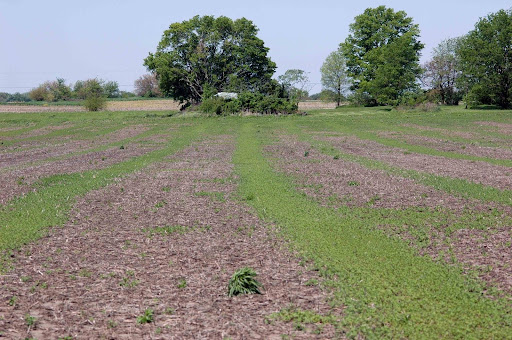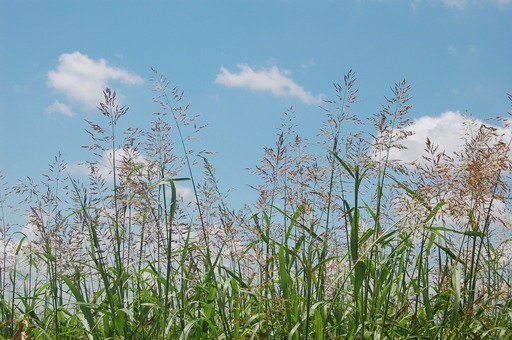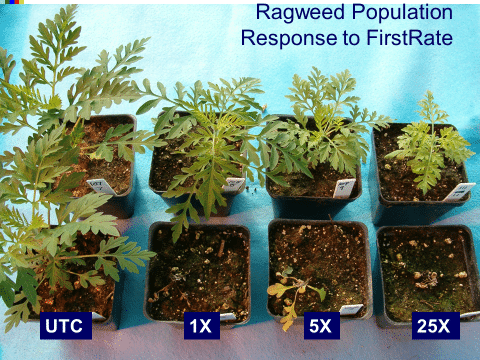Xanthium strumarium
Also known as: clotbur, rough cocklebur
Common cocklebur is a broadleaf summer annual weed. It is a large-seeded, fast-growing, bush-like weed distributed throughout the United States. Cocklebur is a major problem in soybean, cotton, and corn crops. It can grow 0.8 inch per day and can cause significant yield losses (up to 80% with 40,000 cocklebur plants per acre in soybean). Young plants are toxic to livestock, and the burs can injure them when they get caught in animal fur or hair.
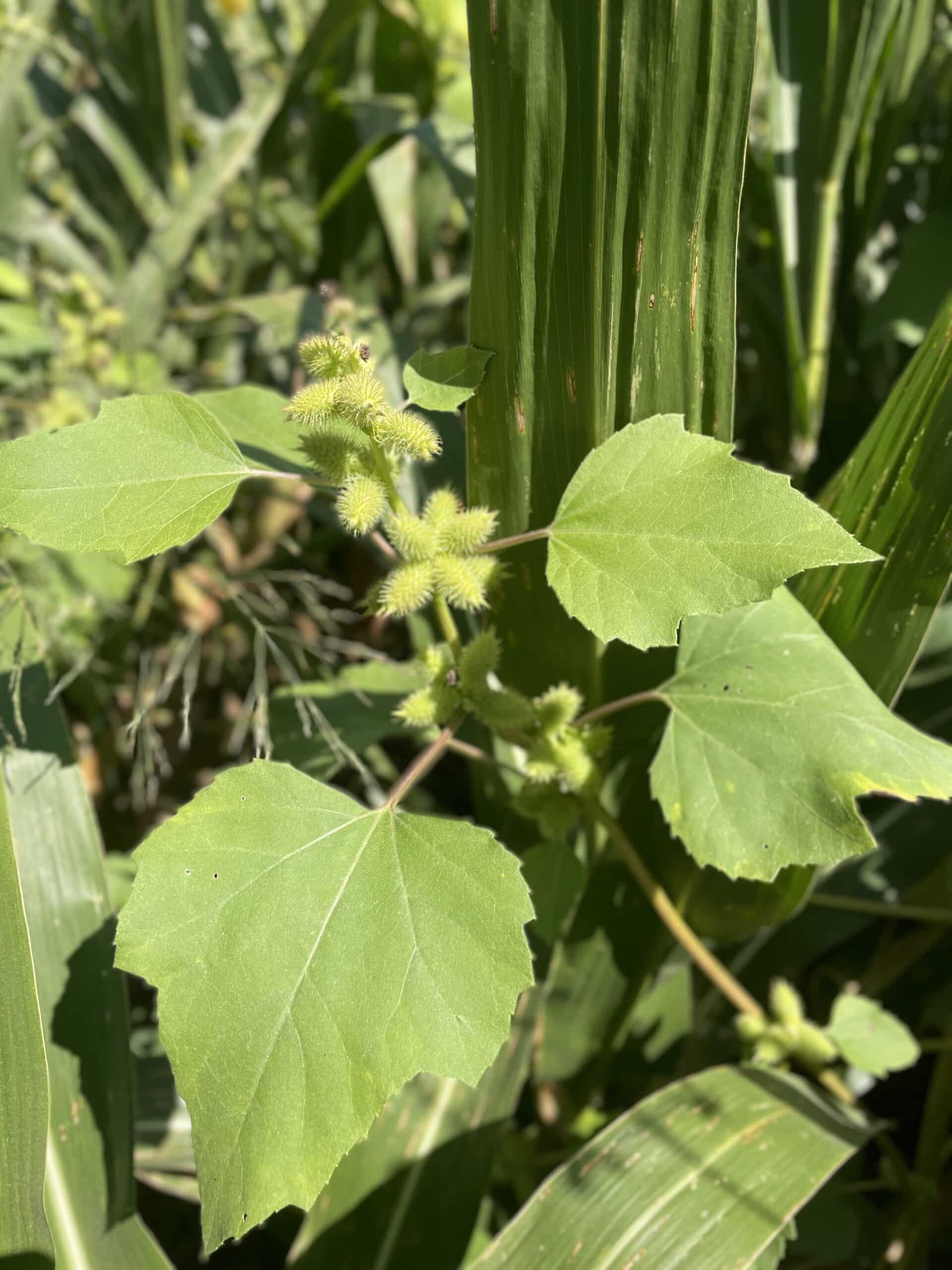
Identifying Features
The cotyledons of this summer annual weed are long and narrow, and the first true leaves are positioned opposite each other and are finely toothed.
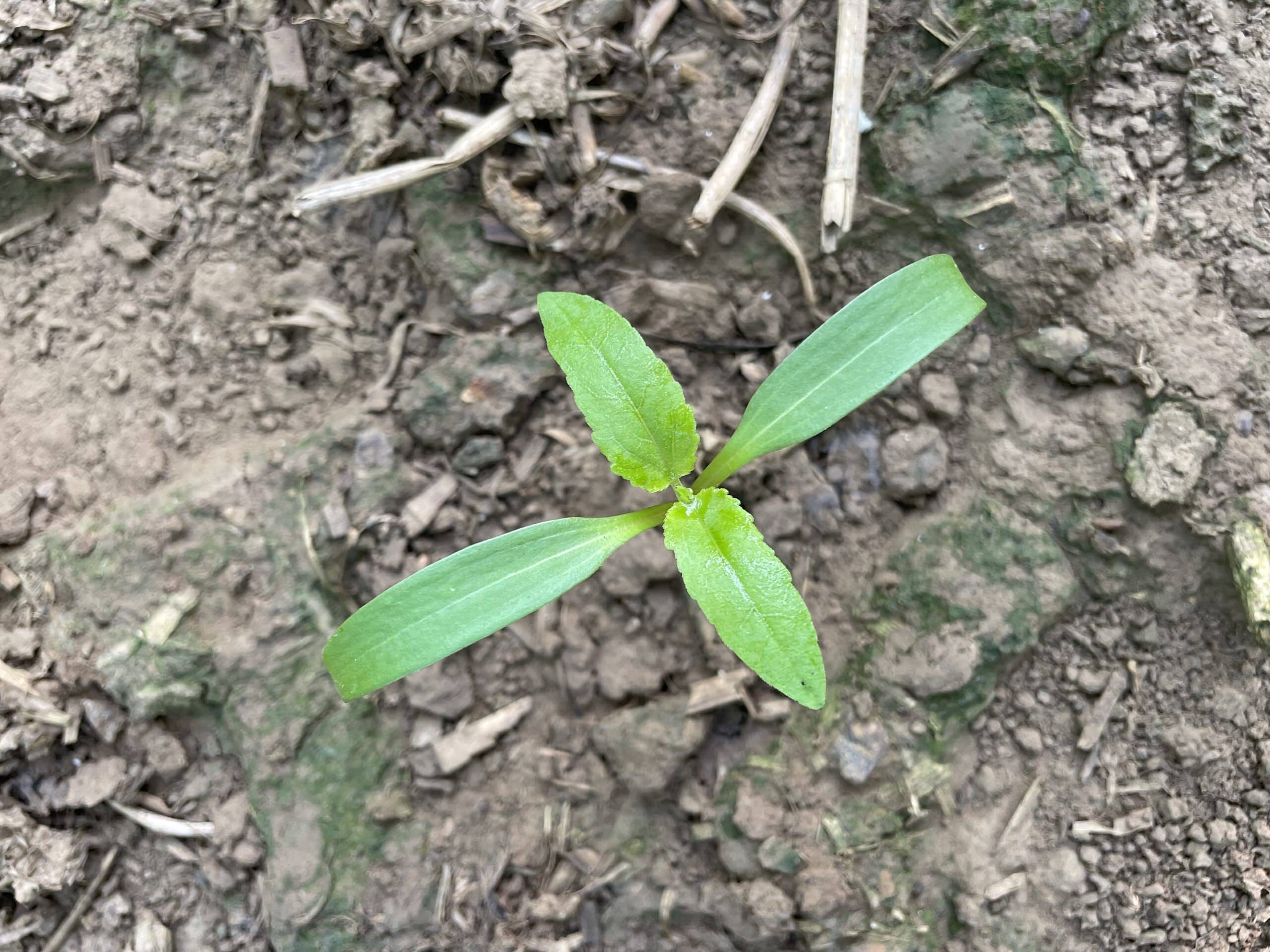
Mature plants have rough, branched stems that are hairy with dark purple spots and ridges that run lengthwise along the stems. The plants are erect and branching and can grow up to 5.5 feet tall. Leaves are positioned alternately with long petioles, and can be up to 6 inches long. Leaf margins have sharp teeth.
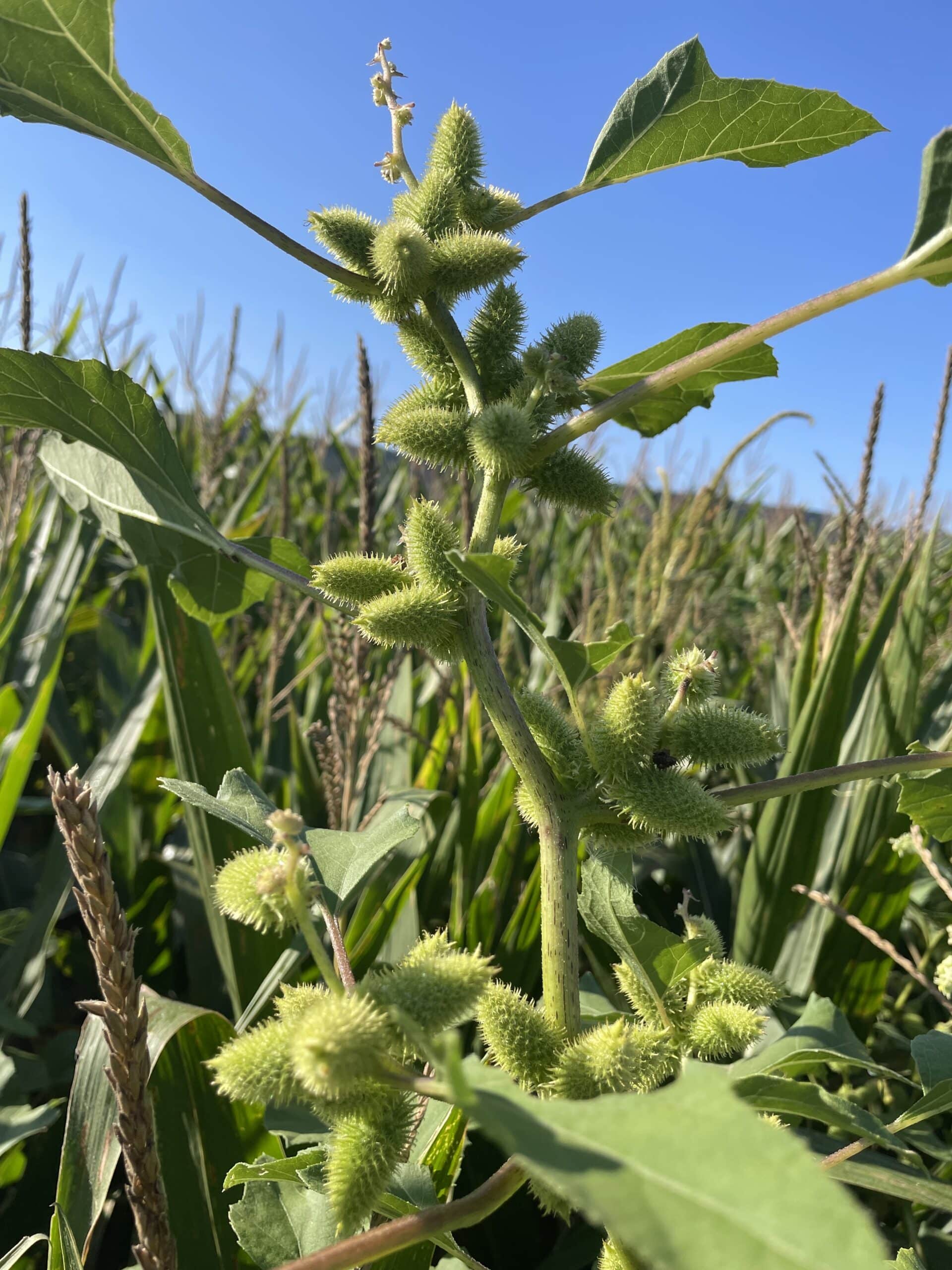
Seed Production
Cocklebur produces egg-shaped burs, which are 0.4 to 1.4 inches long, hard, and covered with hooked prickles or barbs. The prickly burs of cocklebur easily hook onto animal hair or fur, which helps spread the seeds over longer distances. They turn from light green to dark brown as they mature. Each bur contains two fruits that each have one seed. One seed in the bur can germinate soon after it falls to the soil, and the other seed is dormant for one year or longer. Seeds can typically survive in the soil for 3 to 9 years. The seeds are oblong, light brown to black, and pointed. Cocklebur typically produces around 1,800 seeds per plant, but can produce up to 11,000 seeds per plant.
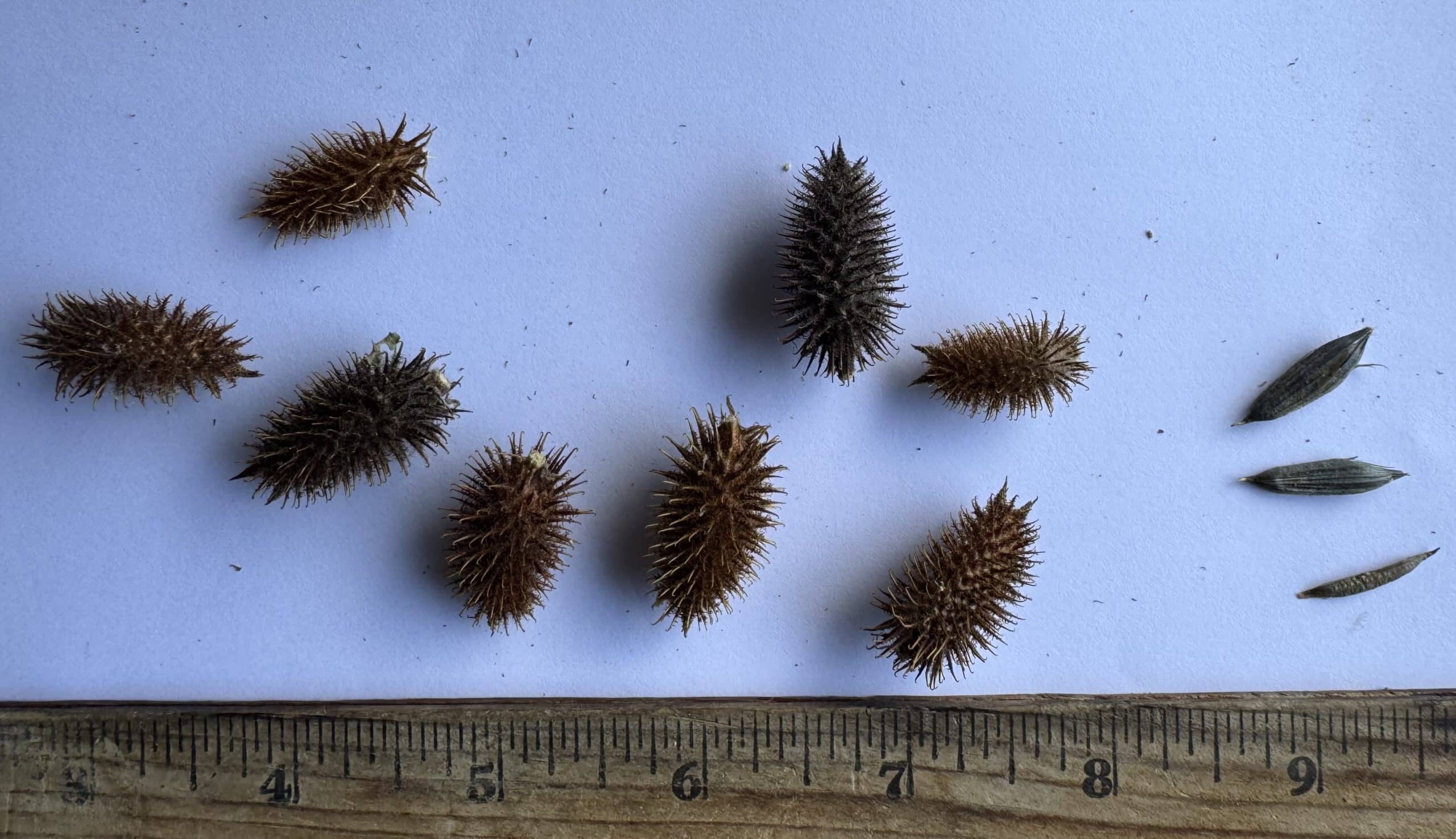
Herbicide Resistance
Cocklebur populations resistant to Group 2 herbicides (ALS-Inhibitors) have been documented in 12 states in the US. It was first detected in Mississippi in 1989 in soybeans. In the early 1990s, it was detected in Missouri, Tennessee, and Minnesota. It has also been detected in Arkansas, Iowa, Oklahoma, Kansas, Maryland, Illinois, Ohio, and North Carolina.
Cocklebur populations resistant to MSMA used in cotton have been reported in seven states in the U.S. It was first reported in South Carolina in 1985, and since then has also been reported in Alabama, Arkansas, Tennessee, Louisiana, Mississippi, and North Carolina.
Integrated Weed Management Options
Tillage
Reducing tillage can help manage common cocklebur. No-tillage practices can reduce the variability of cocklebur emergence by concentrating seeds near the soil surface.
Crop Rotation
Rotating to a sod crop or perennial forage crop for a few years can effectively reduce the seedbank by creating summer harvest timings that allow for mechanical control of emerged cocklebur plants. Including a winter grain crop in the rotation can also be an effective control strategy, because harvest occurs prior to cocklebur seed production and any weeds present can be controlled after harvest.
Cultural Production Practices
Crop management practices such as adjusting row spacing and planting dates can also help manage cocklebur. Planting corn earlier can reduce cocklebur competition. In soybean, planting in narrow rows can reduce cocklebur emergence and competition. Cocklebur often emerges first in unmanaged areas such as field edges and ditchbanks, so controlling it within these areas can prevent it from spreading into crop fields.
Herbicide Control Options
Timely use of herbicides, especially those with residual activity, both at planting and post-planting also help control cocklebur. The following herbicides are observed to have 85% or more control of cocklebur from the Penn State Agronomy Guide 2025.
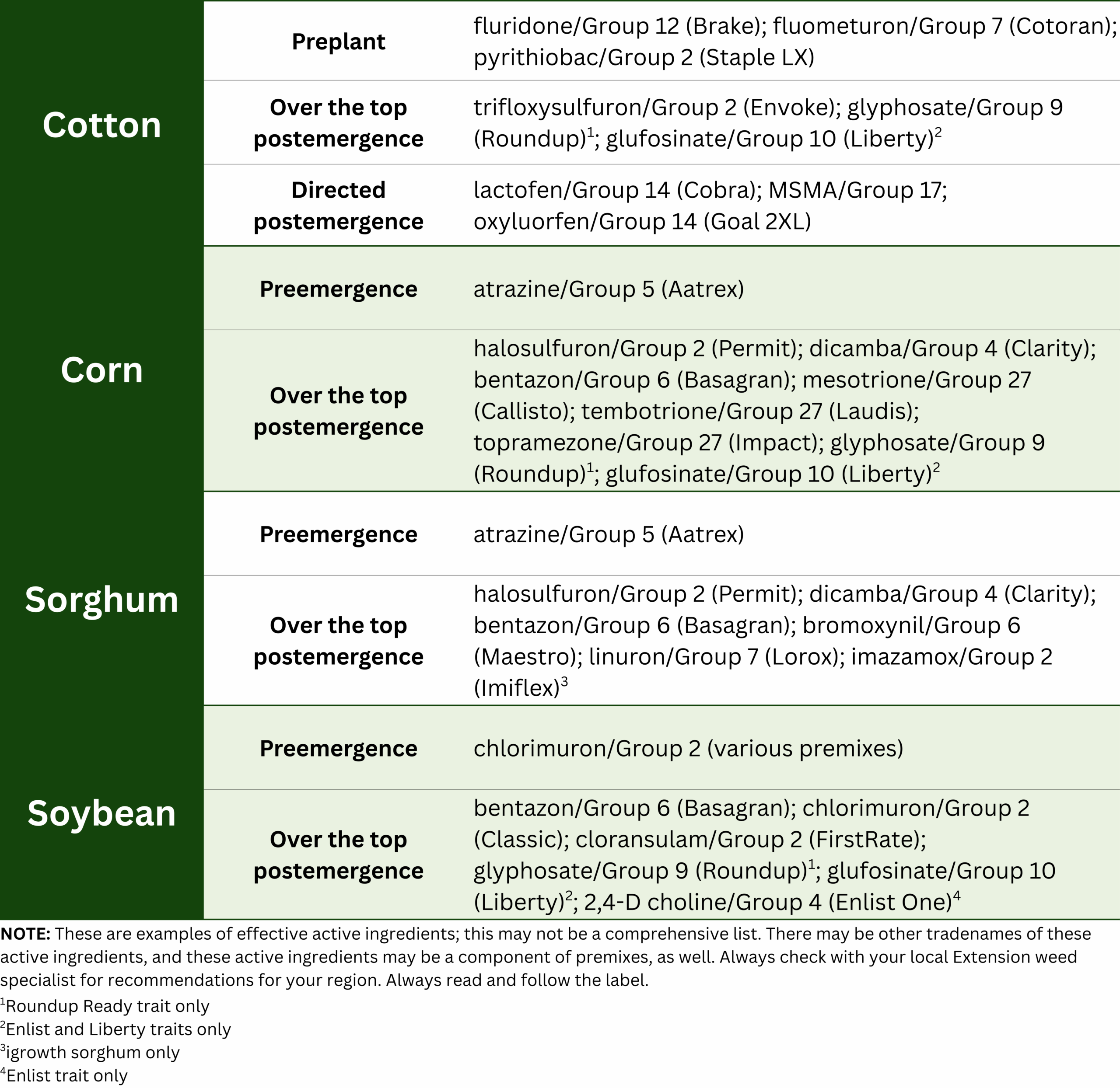
Resources
Cornell CALS: https://cals.cornell.edu/weed-science/weed-profiles/common-cocklebur
Missisippi State University 2025 Management Suggestions for Row Crops: https://extension.msstate.edu/publications/2025-weed-management-suggestions-for-mississippi-row-crops
Penn State Extension Agronomy Guide: https://extension.psu.edu/the-penn-state-agronomy-guide
SARE Manage Weeds on Your Farm https://www.sare.org/resources/manage-weeds-on-your-farm/
Weeds of The Northeast: https://www.cornellpress.cornell.edu/book/9781501755729/weeds-of-the-northeast/#bookTabs=1
Citations
Bararpour MT, Oliver LR (1998) Effect of tillage and interference on common cocklebur (Xanthium strumarium ) and sicklepod (Senna obtusifolia ) population, seed production, and seedbank. Weed sci 46:424–431
Barrentine WL (1974) Common Cocklebur Competition in Soybeans. Weed Science 22:600–603
Bozsa RC, Oliver LR (1990) Competitive Mechanisms of Common Cocklebur (Xanthium strumarium) and Soybean (Glycine max) during Seedling Growth. Weed Science 38:344–350
Heap, I. The International Herbicide-Resistant Weed Database. Online. Thursday, September 19, 2024. Available www.weedscience.org
Cornell CALS: https://cals.cornell.edu/weed-science/weed-profiles/common-cocklebur
SARE Cocklebur: https://www.sare.org/publications/manage-weeds-on-your-farm/common-cocklebur/
Norsworthy JK (2004) Soybean canopy formation effects on pitted morningglory (Ipomoea lacunosa), common cocklebur (Xanthium strumarium), and sicklepod (Senna obtusifolia) emergence. Weed sci 52:954–960
Uva, Richard H. (1997) Weeds of the Northeast
Author
Noelle Connors, Penn State University
Editors
Emily Unglesbee, GROW
John Wallace, Penn State University
Mark VanGessel, University of Delaware
Michael Flessner, Virginia Tech
William Curran, Penn State University (emeritus)
